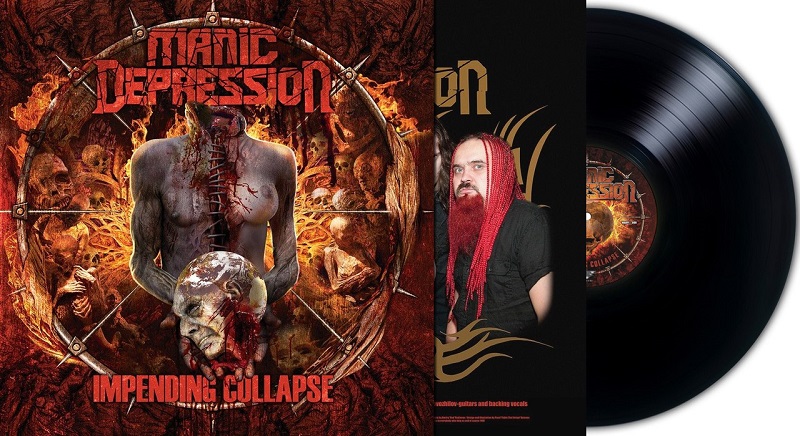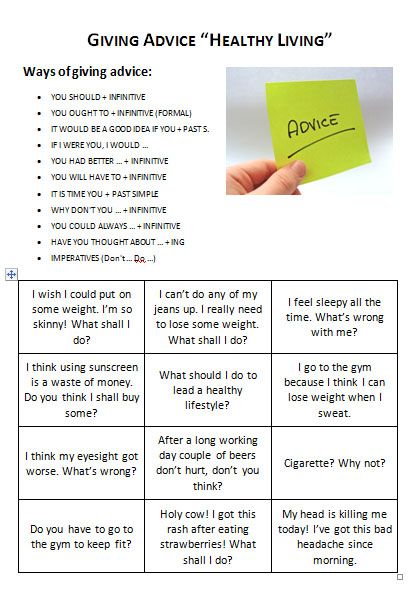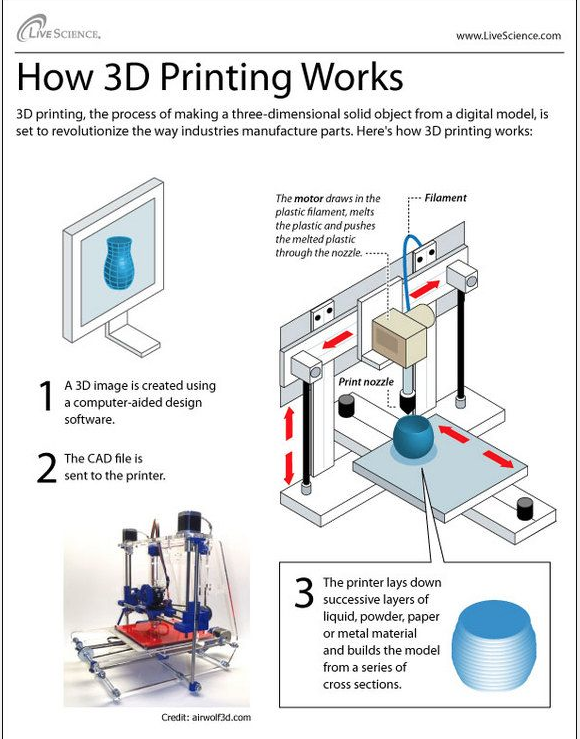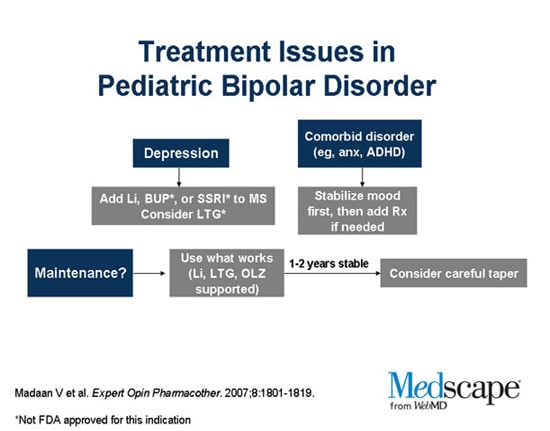Whats manic depression
Bipolar Disorder (Manic Depression): Symptoms & Treatment
Overview
What is bipolar disorder?
Bipolar disorder (formerly known as manic-depressive illness or manic depression) is a lifelong mood disorder and mental health condition that causes intense shifts in mood, energy levels, thinking patterns and behavior. These shifts can last for hours, days, weeks or months and interrupt your ability to carry out day-to-day tasks.
There are a few types of bipolar disorder, which involve experiencing significant fluctuations in mood referred to as hypomanic/manic and depressive episodes. However, people with bipolar disorder aren’t always in a hypomanic/manic or depressive state. They also experience periods of normal mood, known as euthymia.
Manic episodes
A key feature of bipolar I disorder is manic episodes. To meet the criteria for bipolar I disorder, you must have had at least one manic episode in your life for at least a week with or without ever experiencing a depressive episode.
Mania is a condition in which you have a period of abnormally elevated or irritable mood, as well as extreme changes in emotions, thoughts, energy, talkativeness and activity level. This highly energized level of physical and mental activity and behavior is a change from your usual self and is noticeable by others.
People who are in manic states may indulge in activities that cause them physical, social or financial harm, such as suddenly spending or gambling extreme amounts of money or driving recklessly. They also occasionally develop psychotic symptoms, such as delusions and hallucinations, which can cause difficulties in distinguishing bipolar disorder from other disorders such as schizophrenia or schizoaffective disorder.
People with certain types of bipolar such as bipolar II disorder experience hypomania, which is a less severe form of mania. It doesn’t last as long as manic episodes and it doesn’t interfere with daily functioning as much.
Depressive episodes
During a depressive episode, you experience a low or depressed mood and/or loss of interest in most activities, as well as many other symptoms of depression, such as:
- Tiredness.
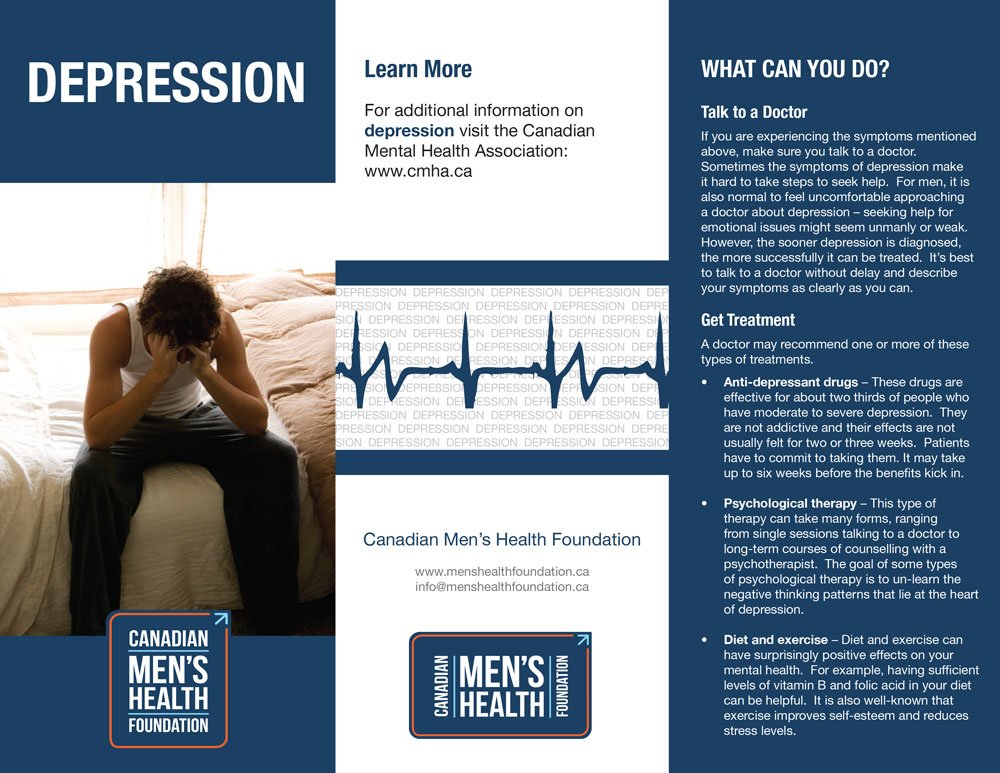
- Changes in appetite.
- Feelings of worthlessness and hopelessness.
Why is bipolar disorder no longer called manic-depressive illness?
In the last few decades, the medical world, especially the field of psychiatry, has intentionally made a shift from using “manic-depressive illness” or “manic depression” to describe bipolar disorder. There are several reasons for this shift, including:
- Healthcare providers used to use “manic depression” to describe a wide range of mental health conditions. As mental health condition classification systems, including the Diagnostic and Statistical Manual of Mental Disorders (DSM), have become more sophisticated, the new term “bipolar disorder” allows for more clarity in diagnosis.
- There’s a lot of stigma and negativity associated with the terms “manic” and “mania,” especially due to the use of “maniac.” Similarly, people use the term “depression” casually to describe periods of sadness that don’t qualify as clinical depression.
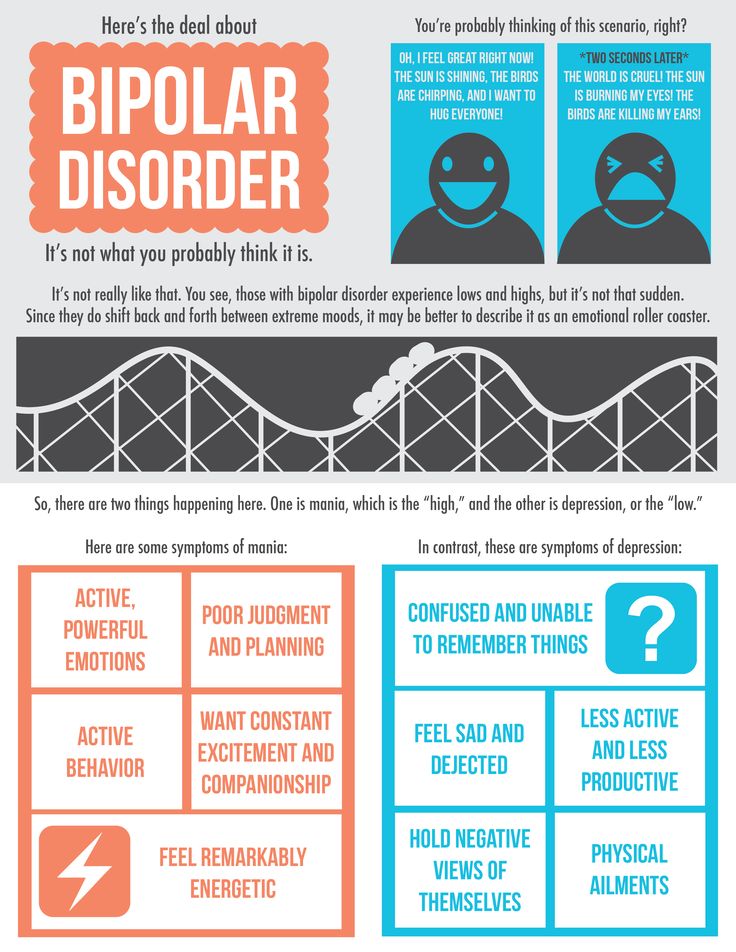 Using “bipolar disorder” takes the focus away from these two words. “Bipolar disorder” is more of a clinical, medical term and less emotionally loaded than “manic depression.”
Using “bipolar disorder” takes the focus away from these two words. “Bipolar disorder” is more of a clinical, medical term and less emotionally loaded than “manic depression.” - The term “manic depression” excludes the cyclothymic or hypomanic (bipolar II disorder) versions of the condition.
What are the types of bipolar disorder?
There are four types of bipolar disorder, including:
- Bipolar I disorder: People with bipolar I disorder have experienced one or more episodes of mania. Most people with bipolar I will have episodes of both mania and depression, but an episode of depression isn’t necessary for a diagnosis. The depressive episodes usually last at least two weeks. To be diagnosed with bipolar I, your manic episodes must last at least seven days or be so severe that you need hospitalization. People with bipolar I can also experience mixed states (episodes of both manic and depressive symptoms).
- Bipolar II disorder: People with bipolar II experience depressive episodes and hypomanic episodes.
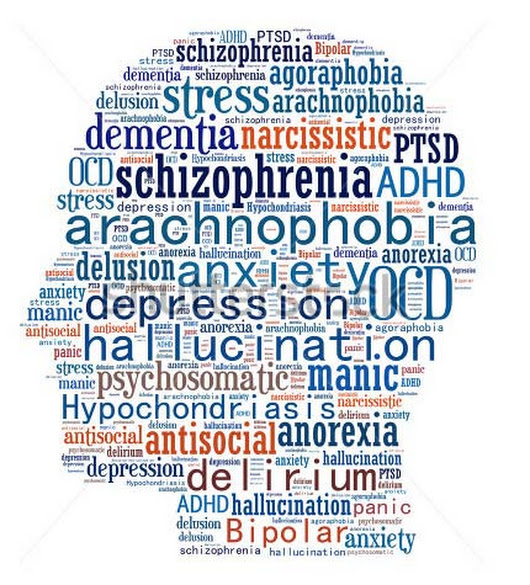 But they never experience a full manic episode that’s characteristic of bipolar I disorder. While hypomania is less impairing than mania, bipolar II disorder is often more debilitating than bipolar I disorder due to chronic depression being more common in bipolar II.
But they never experience a full manic episode that’s characteristic of bipolar I disorder. While hypomania is less impairing than mania, bipolar II disorder is often more debilitating than bipolar I disorder due to chronic depression being more common in bipolar II. - Cyclothymic disorder (cyclothymia): People with cyclothymic disorder have a chronically unstable mood state. They experience hypomania and mild depression for at least two years. People with cyclothymia may have brief periods of normal mood (euthymia), but these periods last fewer than eight weeks.
- Other specified and unspecified bipolar and related disorders: If a person doesn’t meet the diagnostic criteria for bipolar I, II or cyclothymia but has still experienced periods of clinically significant abnormal mood elevation, it’s considered other specified or unspecified bipolar disorder.
What’s the difference between borderline personality disorder and bipolar disorder?
While borderline personality disorder (BPD) and bipolar disorder have similar symptoms and are often confused for each other, they’re distinct conditions.
BPD involves a longstanding pattern of abrupt, moment-to-moment swings in moods, behavior and self-image that are often triggered by conflicts in interactions with other people. Nonsuicidal self-injury is also common in BPD but not in bipolar disorder.
Bipolar disorder is different from BPD because it involves distinct, longer-lasting episodes of mania/hypomania and/or depression. Several things can trigger manic or depressive episodes, such as sleep changes, stress, medications and substance use.
Who does bipolar disorder affect?
Bipolar disorder can affect anyone. The average age of onset is 25 years, but, more rarely, it can start as early as early childhood or as late as in your 40s or 50s.
Although bipolar disorder affects people assigned female at birth (AFAB) and people assigned male at birth (AMAB) in equal numbers, the condition tends to affect them differently.
People AFAB with bipolar disorder may switch moods more quickly. When people with bipolar disorder experience four or more manic or depressive episodes in a year, this is called “rapid cycling.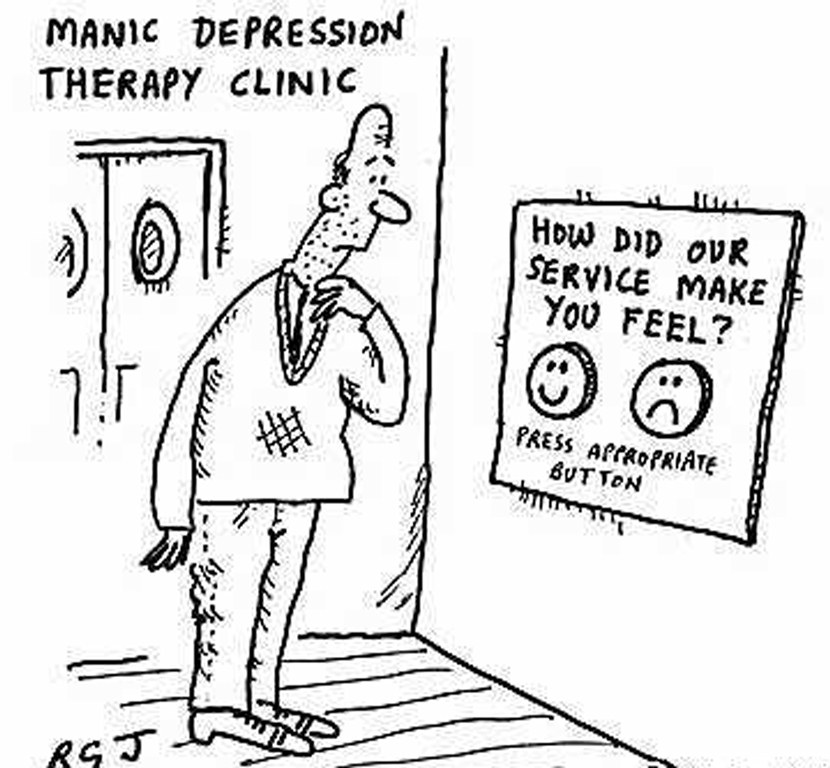 ” Varying levels of sex hormones and thyroid hormones, together with the tendency for people AFAB to be prescribed antidepressants, may contribute to the more rapid cycling in this population.
” Varying levels of sex hormones and thyroid hormones, together with the tendency for people AFAB to be prescribed antidepressants, may contribute to the more rapid cycling in this population.
People AFAB with bipolar disorder may also experience more periods of depression than people AMAB.
How common is bipolar disorder?
Bipolar disorder affects approximately 5.7 million adult Americans or about 2.6% of the U.S. population.
Symptoms and Causes
What are the signs and symptoms of bipolar disorder?
The defining sign of bipolar I disorder is a manic episode that lasts at least one week, while people with bipolar II disorder or cyclothymia experience hypomanic episodes.
But many people with bipolar disorder experience both hypomanic/manic and depressive episodes. These changing mood states don’t always follow a set pattern, and depression doesn’t always follow manic phases. A person may also experience the same mood state several times — with periods of euthymia in between — before experiencing the opposite mood.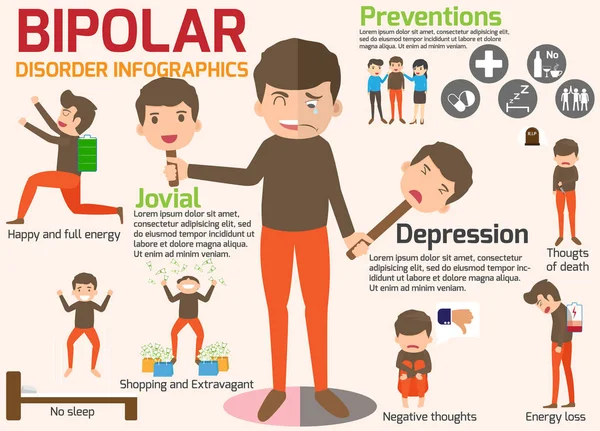
Mood changes in bipolar disorder can happen over a period of weeks, months and sometimes even years.
An important aspect of the mood changes is that they’re a departure from your regular self and that the mood change is sustained for a long time. It may be many days or weeks in the case of mania and many weeks or months in the case of depression.
The severity of the depressive and manic phases can differ from person to person and in the same person at different times.
Signs and symptoms of manic episodes
Some people with bipolar disorder will have episodes of mania or hypomania many times throughout their life; others may experience them only rarely.
Signs and symptoms of a manic episode include:
- Excessive happiness, hopefulness and excitement.
- Sudden and severe changes in mood, such as going from being joyful to being angry and hostile.
- Restlessness.
- Rapid speech and racing thoughts.
- Increased energy and less need for sleep.
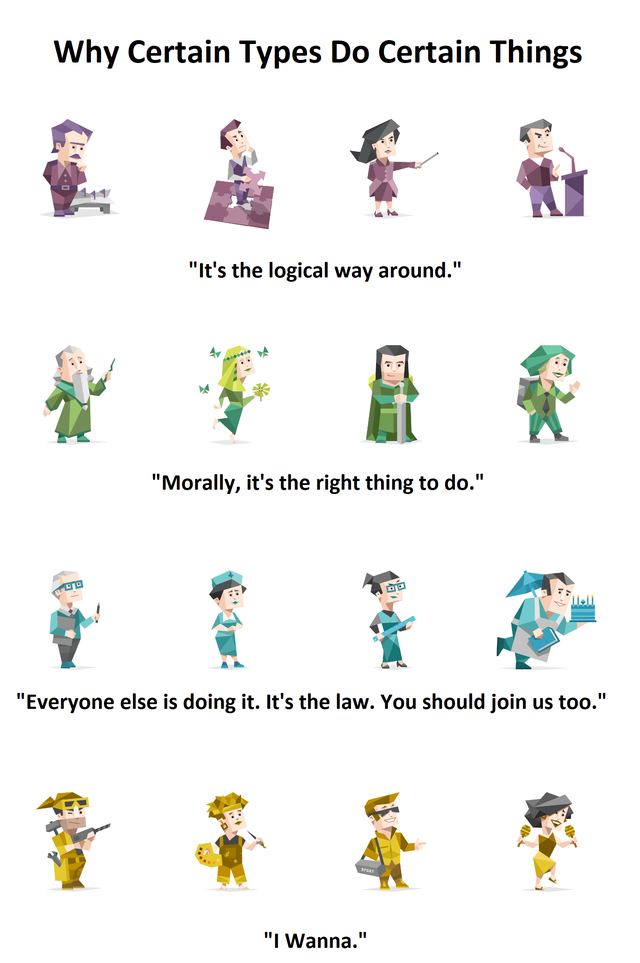
- Increased impulsivity and poor judgment, such as suddenly quitting your job.
- Making grand and unattainable plans.
- Reckless and risk-taking behavior, such as drug and alcohol misuse and having unsafe or unprotected sex.
- Feeling like you’re unusually important, talented or powerful.
- Psychosis — experiencing hallucinations and delusions (in the most severe manic episodes).
Most of the time, people experiencing a manic episode are unaware of the negative consequences of their actions. With bipolar disorder, suicide is an ever-present danger — some people become suicidal in manic episodes, not just depressive episodes.
If a person is having an intense manic episode, especially if they’re experiencing hallucinations and delusions, they may need to be hospitalized to protect themselves and others from possible harm.
Signs and symptoms of hypomania
Some people with bipolar disorder have milder manic-like symptoms. This is called hypomania. With hypomania, you may feel very good and find that you can get a lot done. People with hypomania can often function well in social situations or at work.
With hypomania, you may feel very good and find that you can get a lot done. People with hypomania can often function well in social situations or at work.
You may not feel like anything is wrong during a hypomanic episode. But your family and friends may notice your mood swings and activity level changes and think that they’re unusual for you. After hypomania, you might experience severe depression.
Signs and symptoms of depressive episodes
The symptoms of depressive episodes in bipolar disorder are the same as those of major depression. They include:
- Overwhelming sadness.
- Low energy and fatigue.
- Lack of motivation.
- Feelings of hopelessness or worthlessness.
- Loss of enjoyment of things that were once pleasurable for you.
- Difficulty concentrating and making decisions.
- Uncontrollable crying.
- Irritability.
- Increased need for sleep.
- Insomnia or excessive sleep.
- A change in appetite, causing weight loss or gain.
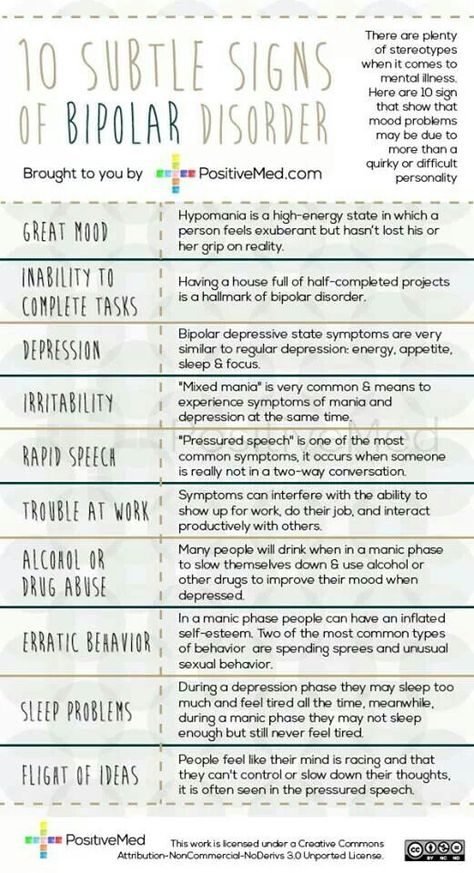
- Thoughts of death or suicide (suicidal ideation).
If you’re experiencing suicidal ideation (thoughts of suicide), it’s important to seek immediate care. Call 911 or the National Suicide Prevention Lifeline at 1.800.273.8255. Someone will be available to talk with you 24 hours a day, seven days a week.
Signs and symptoms of a mixed episode
The symptoms of a mixed episode include both manic and depressive symptoms together. During a mixed episode, you have the negative feelings and thoughts that come with depression but also feel agitated, restless and high energy.
People who experience mixed episodes often describe it as the worst part of bipolar disorder.
What causes bipolar disorder?
Scientists don’t yet know the exact cause of bipolar disorder.
But they do believe there’s a strong genetic (inherited) component. Bipolar disorder is considered one of the most heritable psychiatric conditions — more than two-thirds of people with bipolar disorder have at least one close biological relative with the condition.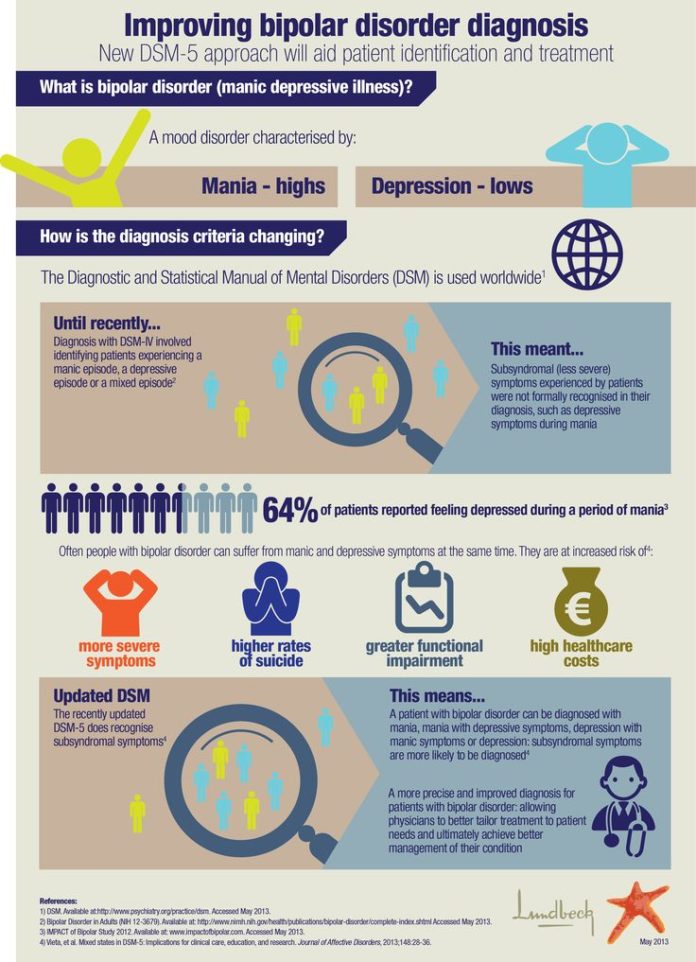 However, just because you have a biological relative with bipolar disorder, doesn’t necessarily mean you’ll also develop it.
However, just because you have a biological relative with bipolar disorder, doesn’t necessarily mean you’ll also develop it.
Other factors that scientists think contribute to the development of bipolar disorder include:
- Changes in your brain: Researchers have identified subtle differences in the average size or activation of some brain structures in people with bipolar disorder. However, brain scans can’t diagnose the condition.
- Environmental factors like trauma and stress: A stressful event, such as the death of a loved one, a serious illness, divorce or financial problems can trigger a manic or depressive episode. Because of this, stress and trauma may also play a role in the development of bipolar disorder.
Scientists are currently performing research to determine the relationship that these factors have in bipolar disorder, how they may help prevent its onset and what role they may play in its treatment.
Diagnosis and Tests
How is bipolar disorder diagnosed?
To diagnose bipolar disorder, your healthcare provider may use many tools, including:
- A physical exam.
- A thorough medical history, which will include asking about your symptoms, lifetime history, experiences and family history.
- Medical tests, such as blood tests, to rule out other conditions that could be causing your symptoms, such as hyperthyroidism.
- A mental health evaluation. Your healthcare provider may perform the evaluation, or they may refer you to a mental health specialist, such as a psychologist or psychiatrist.
To be diagnosed with bipolar disorder, you must have experienced at least one episode of mania or hypomania. Mental health providers use the Diagnostic and Statistical Manual of Mental Disorders (DSM) to diagnose the type of bipolar disorder a person may be experiencing.
To determine what type of bipolar disorder you may have, your mental health provider assesses the pattern of symptoms and how much they affect your life during the most severe episodes.
People with bipolar disorder are more likely to also have the following mental health conditions:
- Anxiety.
- Attention-deficit /hyperactivity disorder (ADHD).
- Post-traumatic stress disorder (PTSD).
- Substance use disorders/dual diagnosis.
Because of this, as well as the fact that memory is often impaired during mania so people can’t remember experiencing it, it can be difficult for healthcare providers to properly diagnose people with bipolar disorder.
People with bipolar disorder who are experiencing a severe manic episode with hallucinations may be incorrectly diagnosed with schizophrenia. Bipolar disorder can also be misdiagnosed as borderline personality disorder (BPD).
Because of this, it’s important to be honest and thorough when explaining all of your symptoms and experiences when talking with your healthcare provider. It can also be helpful to include a loved one who may be able to provide additional details about your mental health history in your discussions with your provider.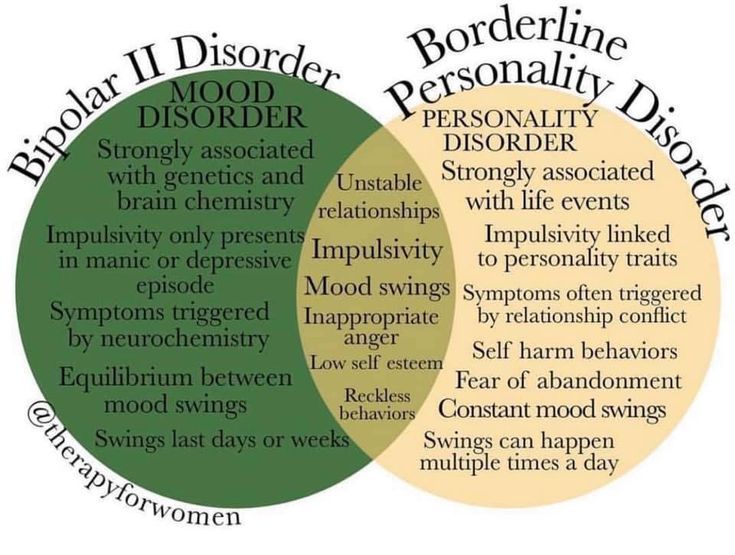
Management and Treatment
How is bipolar disorder treated?
Treatment can help many people, including those with the most severe forms of bipolar disorder. An effective treatment plan usually includes a combination of the following therapies:
- Psychotherapy (talk therapy).
- Medications.
- Self-management strategies, like education and identifying the early symptoms of an episode or possible triggers of episodes.
- Helpful lifestyle habits, such as exercise, yoga and meditation. These can support, but not replace, treatment.
- Other therapies, such as electroconvulsive therapy (ECT) in cases that are poorly responsive to medication or where rapid control of symptoms is necessary to prevent harm.
Bipolar disorder is a lifelong condition, so treatment is a lifelong commitment. It can sometimes take several months to years before you and your healthcare provider find a comprehensive treatment plan that works best for you. Although this can be discouraging, it’s important to continue treatment.
Although this can be discouraging, it’s important to continue treatment.
Episodes of mania and depression typically come back over time. Between episodes, many people with bipolar disorder don’t have mood changes, but some people may have lingering symptoms. Long-term, continuous treatment can help manage these symptoms.
If you have other mental health conditions in addition to bipolar disorder, such as anxiety or ADHD, it can be more difficult to treat the conditions. For example, the antidepressants healthcare providers prescribe to treat obsessive-compulsive disorder (OCD) and the stimulants they prescribe to treat ADHD may worsen symptoms of bipolar disorder and may even trigger a manic episode.
Again, even though it may be difficult to treat these conditions, it’s not impossible. Be sure to stay committed to finding a treatment plan that works for you.
What types of therapy are used to treat bipolar disorder?
Psychotherapy, also called “talk therapy,” can be an effective part of the treatment plan for people with bipolar disorder.
Psychotherapy is a term for a variety of treatment techniques that aim to help you identify and change troubling emotions, thoughts and behaviors. Working with a mental health professional, such as a psychologist or psychiatrist, can provide support, education and guidance to you and your family.
Different types of therapy for bipolar disorder include:
- Psychoeducation: Psychoeducation is the way mental health professionals teach people about their mental health conditions. As bipolar disorder is a complex condition, learning about the condition and how it can affect your life can help you and your loved ones manage and cope with it better.
- Interpersonal and social rhythm therapy (IPSRT): This therapy is designed to help you improve your moods by understanding and working with your biological and social rhythms. IPSRT is an effective therapy for people with mood disorders, including bipolar disorder. It emphasizes techniques to improve medication adherence (taking your medication regularly), manage stressful life events and reduce disruptions in social rhythms (day-to-day differences in habitual behaviors).
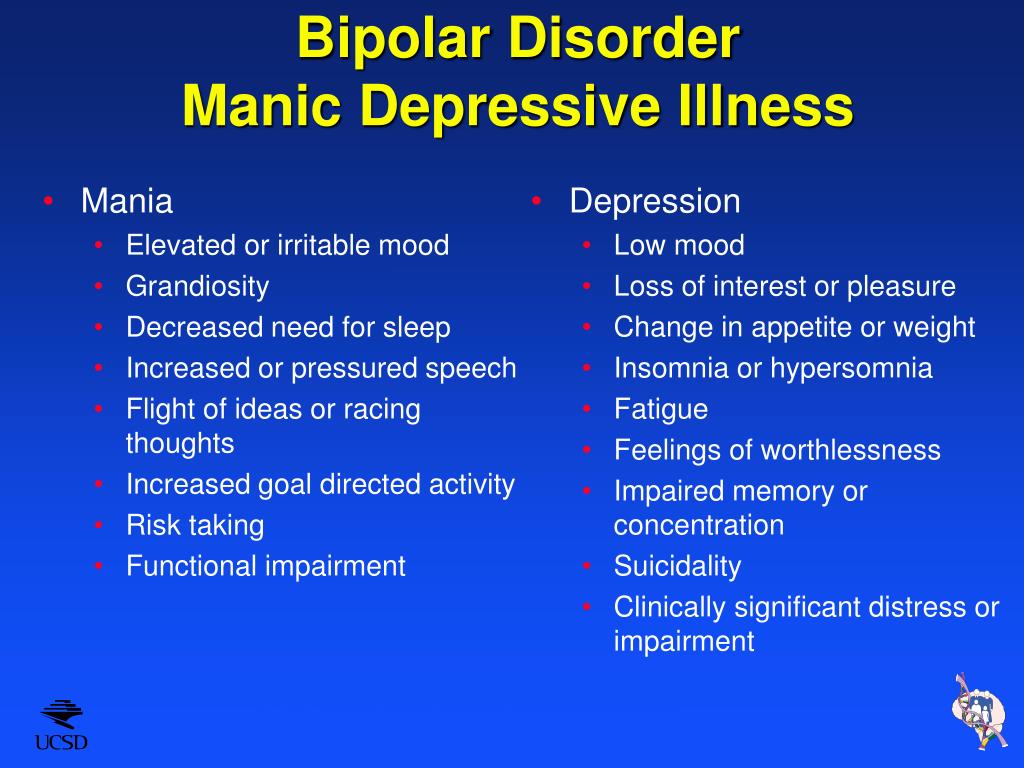 IPSRT teaches you skills that let you protect yourself against the development of future manic or depressive episodes.
IPSRT teaches you skills that let you protect yourself against the development of future manic or depressive episodes. - Family-focused therapy: This therapy is for adults and children with bipolar disorder and their caregivers. During this treatment, your loved ones will join you in therapy sessions of psychoeducation regarding bipolar disorder, communication improvement training and problem-solving skills training.
- Cognitive behavioral therapy (CBT): This is a structured, goal-oriented type of therapy. Your therapist or psychologist helps you take a close look at your thoughts and emotions. You’ll come to understand how your thoughts affect your actions. Through CBT, you can unlearn negative thoughts and behaviors and learn to adopt healthier thinking patterns and habits.
What medications are used to treat bipolar disorder?
Certain medications can help manage symptoms of bipolar disorder. You may need to try several different medications, with guidance from your healthcare provider, before finding what works best.
Medications healthcare providers generally prescribe to treat bipolar disorder include:
- Mood stabilizers.
- Second-generation (“atypical”) neuroleptics (also called antipsychotics).
- Antidepressants.
If you’re taking medication for bipolar disorder, you should:
- Talk with your healthcare provider to understand the risks, side effects and benefits of the medication.
- Tell your healthcare provider about any prescription drugs, over-the-counter medications or supplements you’re already taking.
- Tell your healthcare provider right away if you’re experiencing concerning side effects. They may need to change your dose or try a different medication.
- Remember that medication for bipolar disorder must be taken consistently, as prescribed.
Mood stabilizers for bipolar disorder
People with bipolar disorder typically need mood-stabilizing medication to manage manic or hypomanic episodes.
Types of mood stabilizers and their brand names include:
- Lithium (Eskalith®, Lithobid®, Lithonate®).
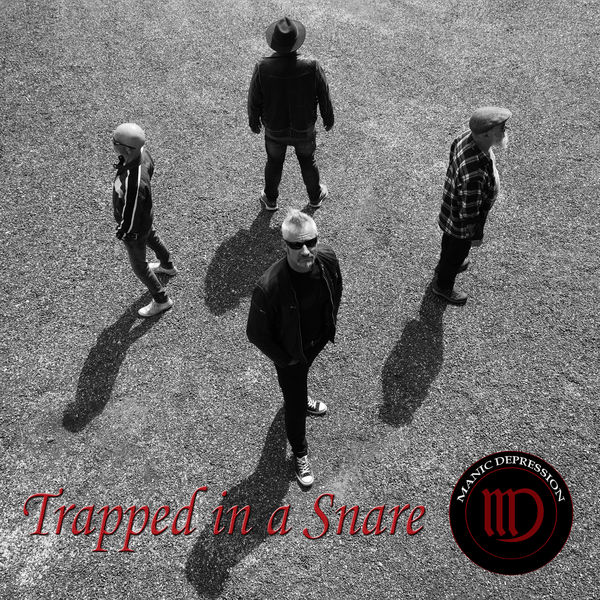
- Valproic acid (Depakene®).
- Divalproex sodium (Depakote®).
- Carbamazepine (Tegretol®, Equetro®).
- Lamotrigine (Lamictal®).
Lithium is one of the most widely prescribed and studied medications for treating bipolar disorder. Lithium is a natural salt and will reduce symptoms of mania within two weeks of starting therapy, but it may take weeks to months before the manic symptoms are fully managed. Because of this, healthcare providers often prescribe other drugs like antipsychotic drugs or antidepressant drugs to help manage symptoms.
Thyroid gland and kidney problems can sometimes develop when taking lithium, so your healthcare provider will monitor the function of your thyroid and kidneys, as well as monitor the levels of lithium in your blood, as levels can easily become too high.
Anything that lowers the level of sodium in your body, such as switching to a low-sodium diet, heavy sweating, fever, vomiting or diarrhea may cause a toxic buildup of lithium in your body.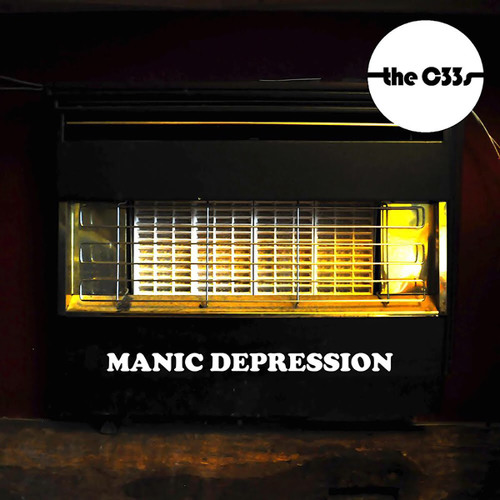 Be aware of these conditions and alert your doctor if you’re on lithium and experience them.
Be aware of these conditions and alert your doctor if you’re on lithium and experience them.
The following are signs of lithium toxicity (lithium overdose). Call your healthcare provider immediately or go to the nearest emergency room if you experience:
- Blurred vision or double vision.
- Irregular pulse.
- Extremely fast or slow heartbeat.
- Difficulty breathing.
- Confusion and dizziness.
- Severe trembling or convulsions.
- Passing large amounts of pee.
- Uncontrolled eye movements.
- Unusual bruising or bleeding.
Neuroleptic medications for bipolar disorder
Healthcare providers often prescribe second-generation or atypical neuroleptics (antipsychotics) in combination with a mood stabilizer for people with bipolar disorder. These medications help with both manic and depressive episodes.
Only four of these drugs are U.S. Food and Drug Administration (FDA)-approved to help treat bipolar depression, including:
- Cariprazine (Vraylar®).
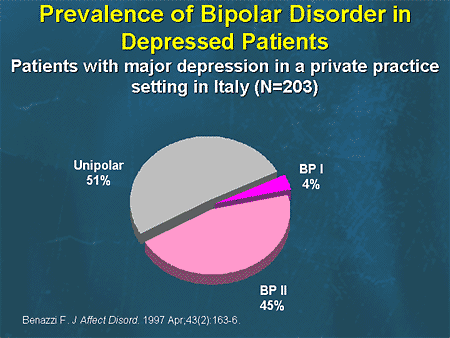
- Lurasidone (Latuda®).
- Olanzapine-fluoxetine combination (Symbyax®).
- Quetiapine (Seroquel®).
However, other medications, such as olanzapine (Zyprexa®), risperidone (Risperdal®) and aripiprazole (Abilify®), are commonly prescribed as well.
Antidepressants for bipolar disorder
Healthcare providers sometimes prescribe antidepressant medication to treat depressive episodes in bipolar disorder, combining the antidepressant with a mood stabilizer to prevent triggering a manic episode.
Antidepressants are never used as the only medication to treat bipolar disorder because only taking an antidepressant drug can trigger a manic episode.
What are the side effects of bipolar disorder medications?
Side effects of bipolar disorder medications are common and vary by medication. It’s important to talk with your healthcare provider about what you can expect when taking certain medications. It’s also important to tell them if you’re experiencing side effects.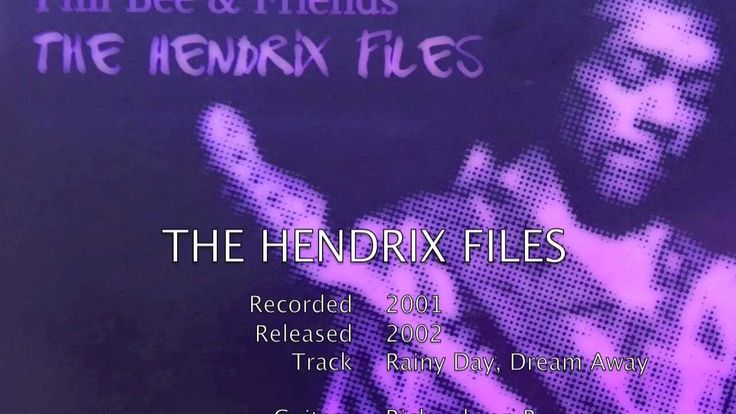
Never stop taking your medication unless your healthcare provider tells you to do so. Abruptly stopping medication can cause severe side effects and trigger severe episodes.
The most common side effects of bipolar disorder medications include:
- Weight gain.
- Metabolic dysregulation, including abnormal lipid levels (dyslipidemia), high blood pressure (hypertension) and high blood sugar (hyperglycemia).
- Drowsiness.
- Akathisia — feelings of restlessness and agitation with a compelling need to move, rock or pace.
What other medical treatments are used for bipolar disorder?
Other treatment options your healthcare provider may consider for treating bipolar disorder include:
- Electroconvulsive therapy (ECT): This is a procedure in which a brief application of an electric current to your brain, through your scalp, induces a seizure. It’s most often used to treat people with severe depression. ECT is very safe and highly effective for medication-resistant depression or acute life-threatening mania.
 It’s the best treatment for mania in people who are pregnant. ECT is uses general anesthesia, so you’ll be asleep during the procedure and won’t feel any pain.
It’s the best treatment for mania in people who are pregnant. ECT is uses general anesthesia, so you’ll be asleep during the procedure and won’t feel any pain. - Transcranial magnetic stimulation (TMS): This therapy involves a short electromagnetic coil that passes an electric current into your brain. Healthcare providers sometimes use it to treat medication-resistant depression. It’s an alternative to ECT. TMS isn’t painful and doesn’t require general anesthesia.
- Thyroid medications: These medications can sometimes act as mood stabilizers. Studies have shown positive results in reducing symptoms in people AFAB with hard-to-treat, rapid-cycling bipolar disorder.
- Ketamine treatment: Ketamine, an anesthetic, given at low doses through an IV, has been proven to provide short-term antidepressant and antisuicidal effects for people with bipolar disorder.
- Hospitalization: This is considered an emergency option in bipolar disorder care.
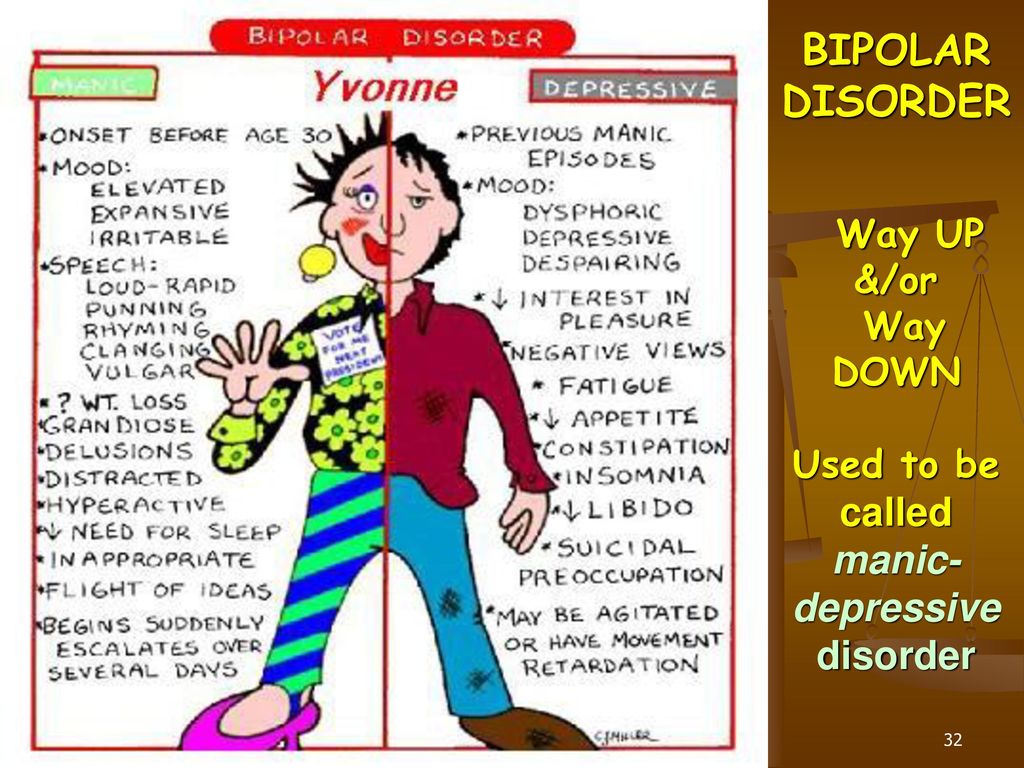 It becomes necessary when someone is experiencing a severe depressive or manic episode and they’re an immediate threat to themselves or others.
It becomes necessary when someone is experiencing a severe depressive or manic episode and they’re an immediate threat to themselves or others.
What lifestyle changes can help with bipolar disorder?
Your healthcare team will likely recommend making lifestyle changes to stop patterns of behavior that worsen the symptoms of bipolar disorder. Some of these lifestyle changes include:
- Quit drinking alcohol and/or using recreational drugs and tobacco: It’s essential to quit drinking and using drugs, including tobacco, since they can interfere with medications you may take. They can also worsen bipolar disorder and trigger a mood episode.
- Keep a daily diary or mood chart: Keeping track of your daily thoughts, feelings and behaviors can help you be aware of how well your treatment is working and/or help you identify potential triggers of manic or depressive episodes.
- Maintain a healthy sleep schedule: Bipolar disorder can greatly affect your sleep patterns, and changes in your frequency of sleep can even trigger an episode.
 Prioritize a routine sleeping schedule, including going to sleep and getting up at the same times every day.
Prioritize a routine sleeping schedule, including going to sleep and getting up at the same times every day. - Exercise: Exercise has been proven to improve mood and mental health in general, so it may help manage your symptoms related to bipolar disorder. Since weight gain is a common side effect of bipolar disorder medications, exercise may also help with weight management.
- Meditation: Meditation has been shown to be effective in improving the depression that’s part of bipolar disorder.
- Manage stress and maintain healthy relationships: Stress and anxiety can worsen mood symptoms in many people with bipolar disorder. It’s important to manage your stress in a healthy way and to try to eliminate stressors when you can. A big part of this is maintaining healthy relationships with friends and family who support you, and letting go of toxic relationships with people who add stress to your life.
Prevention
Can bipolar disorder be prevented?
Unfortunately, there’s no known way to prevent bipolar disorder because scientists don’t know its exact cause.
But it’s important to know the signs and symptoms of bipolar disorder and to seek early intervention.
Outlook / Prognosis
What is the outlook (prognosis) of bipolar disorder?
The prognosis for bipolar disorder is often poor unless it’s properly treated. Many people with bipolar disorder who receive appropriate treatment can live fulfilling and productive lives.
Bipolar disorder results in approximately nine years reduction in expected life span, and as many as1 in 5 people with bipolar disorder commit suicide. An estimated 60% of all people with bipolar disorder have drug or alcohol dependence.
This is why it’s essential to seek medical care and stay committed to treatment for bipolar disorder.
Regular and continued use of medication can help reduce episodes of mania and depression. By knowing how to recognize the symptoms and triggers of these episodes, there’s a better chance for effective treatment and finding coping methods that may prevent long periods of illness, extended hospital stays and suicide.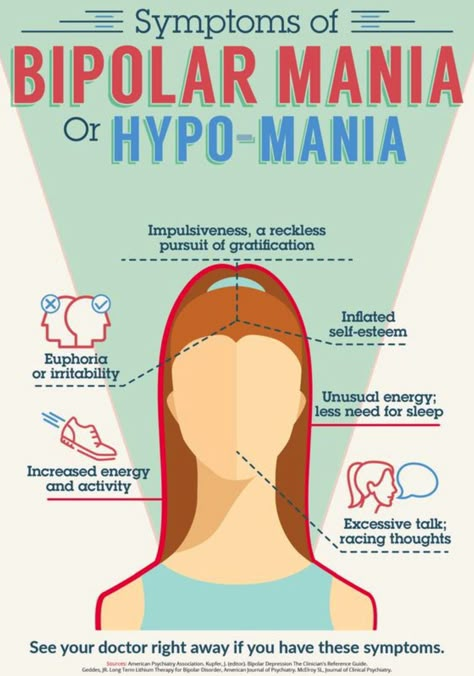
Living With
When should I see my healthcare provider about bipolar disorder?
If you’ve been diagnosed with bipolar disorder, you’ll need to see your healthcare team regularly throughout your life to make sure your treatment is working well for you. This team may include your:
- Primary healthcare provider.
- Psychiatrist.
- Psychologist or therapist.
- Neurologist.
When should I go to the emergency room (ER) for bipolar disorder?
If you’re experiencing any of these situations, it’s essential to call 911 or get to the nearest emergency room:
- Thoughts of death or suicide.
- Thoughts or plans of hurting yourself or others.
- Experiencing hallucinations and delusions.
- Symptoms of lithium toxicity (overdose), such as severe nausea and vomiting, severe hand tremors, confusion and vision changes.
A note from Cleveland Clinic
Bipolar disorder is a lifelong illness. But long-term, ongoing treatment, such as medication and talk therapy, can help manage your symptoms and enable you to live a healthy, purposeful life. It’s important to see your healthcare team regularly to monitor your treatment plan and symptoms. Know that your healthcare providers and loved ones are there to support you.
But long-term, ongoing treatment, such as medication and talk therapy, can help manage your symptoms and enable you to live a healthy, purposeful life. It’s important to see your healthcare team regularly to monitor your treatment plan and symptoms. Know that your healthcare providers and loved ones are there to support you.
Bipolar Disorder (Manic Depression): Symptoms & Treatment
Overview
What is bipolar disorder?
Bipolar disorder (formerly known as manic-depressive illness or manic depression) is a lifelong mood disorder and mental health condition that causes intense shifts in mood, energy levels, thinking patterns and behavior. These shifts can last for hours, days, weeks or months and interrupt your ability to carry out day-to-day tasks.
There are a few types of bipolar disorder, which involve experiencing significant fluctuations in mood referred to as hypomanic/manic and depressive episodes. However, people with bipolar disorder aren’t always in a hypomanic/manic or depressive state. They also experience periods of normal mood, known as euthymia.
They also experience periods of normal mood, known as euthymia.
Manic episodes
A key feature of bipolar I disorder is manic episodes. To meet the criteria for bipolar I disorder, you must have had at least one manic episode in your life for at least a week with or without ever experiencing a depressive episode.
Mania is a condition in which you have a period of abnormally elevated or irritable mood, as well as extreme changes in emotions, thoughts, energy, talkativeness and activity level. This highly energized level of physical and mental activity and behavior is a change from your usual self and is noticeable by others.
People who are in manic states may indulge in activities that cause them physical, social or financial harm, such as suddenly spending or gambling extreme amounts of money or driving recklessly. They also occasionally develop psychotic symptoms, such as delusions and hallucinations, which can cause difficulties in distinguishing bipolar disorder from other disorders such as schizophrenia or schizoaffective disorder.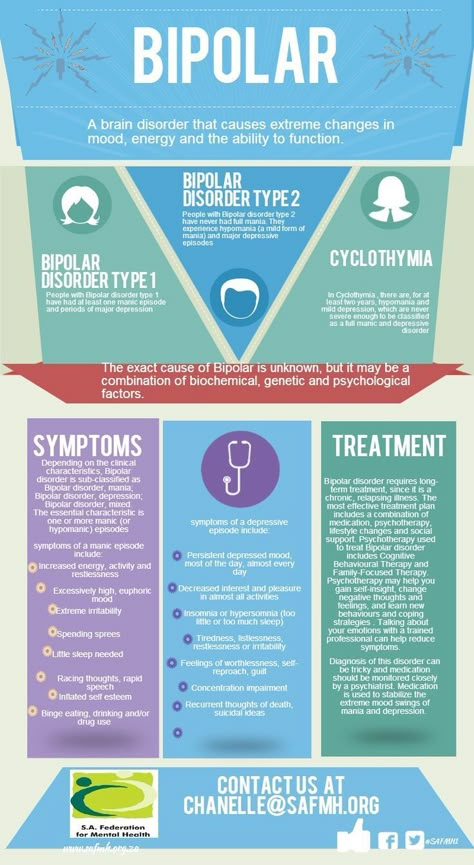
People with certain types of bipolar such as bipolar II disorder experience hypomania, which is a less severe form of mania. It doesn’t last as long as manic episodes and it doesn’t interfere with daily functioning as much.
Depressive episodes
During a depressive episode, you experience a low or depressed mood and/or loss of interest in most activities, as well as many other symptoms of depression, such as:
- Tiredness.
- Changes in appetite.
- Feelings of worthlessness and hopelessness.
Why is bipolar disorder no longer called manic-depressive illness?
In the last few decades, the medical world, especially the field of psychiatry, has intentionally made a shift from using “manic-depressive illness” or “manic depression” to describe bipolar disorder. There are several reasons for this shift, including:
- Healthcare providers used to use “manic depression” to describe a wide range of mental health conditions.
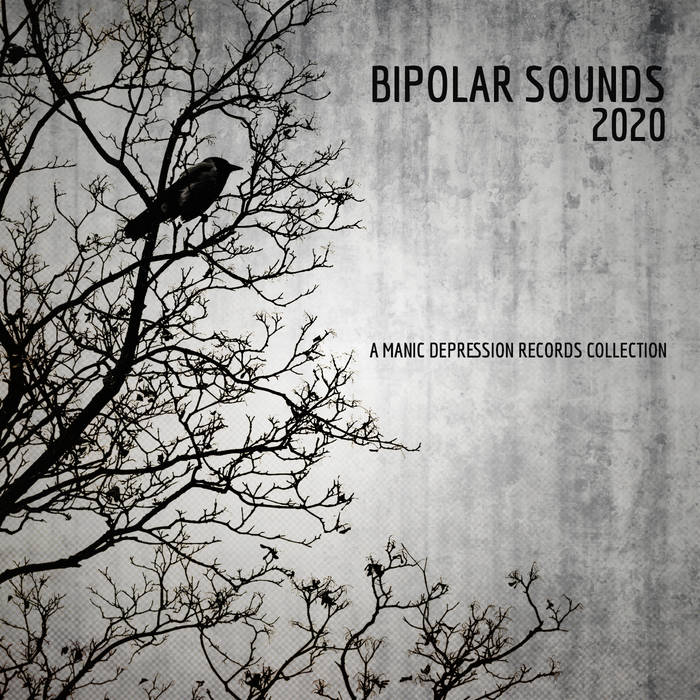 As mental health condition classification systems, including the Diagnostic and Statistical Manual of Mental Disorders (DSM), have become more sophisticated, the new term “bipolar disorder” allows for more clarity in diagnosis.
As mental health condition classification systems, including the Diagnostic and Statistical Manual of Mental Disorders (DSM), have become more sophisticated, the new term “bipolar disorder” allows for more clarity in diagnosis. - There’s a lot of stigma and negativity associated with the terms “manic” and “mania,” especially due to the use of “maniac.” Similarly, people use the term “depression” casually to describe periods of sadness that don’t qualify as clinical depression. Using “bipolar disorder” takes the focus away from these two words. “Bipolar disorder” is more of a clinical, medical term and less emotionally loaded than “manic depression.”
- The term “manic depression” excludes the cyclothymic or hypomanic (bipolar II disorder) versions of the condition.
What are the types of bipolar disorder?
There are four types of bipolar disorder, including:
- Bipolar I disorder: People with bipolar I disorder have experienced one or more episodes of mania.
 Most people with bipolar I will have episodes of both mania and depression, but an episode of depression isn’t necessary for a diagnosis. The depressive episodes usually last at least two weeks. To be diagnosed with bipolar I, your manic episodes must last at least seven days or be so severe that you need hospitalization. People with bipolar I can also experience mixed states (episodes of both manic and depressive symptoms).
Most people with bipolar I will have episodes of both mania and depression, but an episode of depression isn’t necessary for a diagnosis. The depressive episodes usually last at least two weeks. To be diagnosed with bipolar I, your manic episodes must last at least seven days or be so severe that you need hospitalization. People with bipolar I can also experience mixed states (episodes of both manic and depressive symptoms). - Bipolar II disorder: People with bipolar II experience depressive episodes and hypomanic episodes. But they never experience a full manic episode that’s characteristic of bipolar I disorder. While hypomania is less impairing than mania, bipolar II disorder is often more debilitating than bipolar I disorder due to chronic depression being more common in bipolar II.
- Cyclothymic disorder (cyclothymia): People with cyclothymic disorder have a chronically unstable mood state. They experience hypomania and mild depression for at least two years.
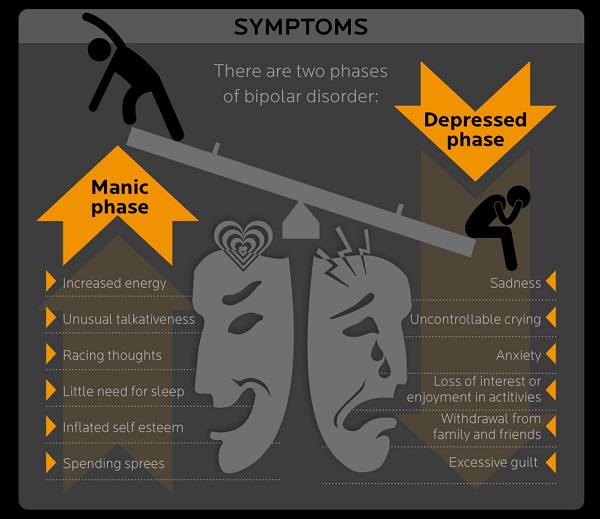 People with cyclothymia may have brief periods of normal mood (euthymia), but these periods last fewer than eight weeks.
People with cyclothymia may have brief periods of normal mood (euthymia), but these periods last fewer than eight weeks. - Other specified and unspecified bipolar and related disorders: If a person doesn’t meet the diagnostic criteria for bipolar I, II or cyclothymia but has still experienced periods of clinically significant abnormal mood elevation, it’s considered other specified or unspecified bipolar disorder.
What’s the difference between borderline personality disorder and bipolar disorder?
While borderline personality disorder (BPD) and bipolar disorder have similar symptoms and are often confused for each other, they’re distinct conditions.
BPD involves a longstanding pattern of abrupt, moment-to-moment swings in moods, behavior and self-image that are often triggered by conflicts in interactions with other people. Nonsuicidal self-injury is also common in BPD but not in bipolar disorder.
Bipolar disorder is different from BPD because it involves distinct, longer-lasting episodes of mania/hypomania and/or depression. Several things can trigger manic or depressive episodes, such as sleep changes, stress, medications and substance use.
Several things can trigger manic or depressive episodes, such as sleep changes, stress, medications and substance use.
Who does bipolar disorder affect?
Bipolar disorder can affect anyone. The average age of onset is 25 years, but, more rarely, it can start as early as early childhood or as late as in your 40s or 50s.
Although bipolar disorder affects people assigned female at birth (AFAB) and people assigned male at birth (AMAB) in equal numbers, the condition tends to affect them differently.
People AFAB with bipolar disorder may switch moods more quickly. When people with bipolar disorder experience four or more manic or depressive episodes in a year, this is called “rapid cycling.” Varying levels of sex hormones and thyroid hormones, together with the tendency for people AFAB to be prescribed antidepressants, may contribute to the more rapid cycling in this population.
People AFAB with bipolar disorder may also experience more periods of depression than people AMAB.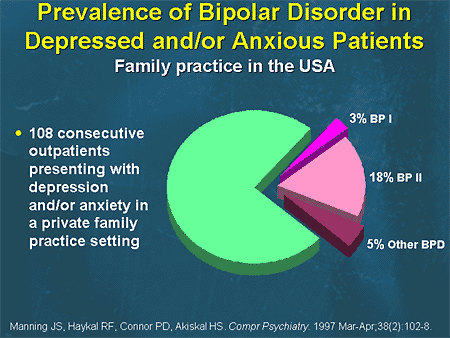
How common is bipolar disorder?
Bipolar disorder affects approximately 5.7 million adult Americans or about 2.6% of the U.S. population.
Symptoms and Causes
What are the signs and symptoms of bipolar disorder?
The defining sign of bipolar I disorder is a manic episode that lasts at least one week, while people with bipolar II disorder or cyclothymia experience hypomanic episodes.
But many people with bipolar disorder experience both hypomanic/manic and depressive episodes. These changing mood states don’t always follow a set pattern, and depression doesn’t always follow manic phases. A person may also experience the same mood state several times — with periods of euthymia in between — before experiencing the opposite mood.
Mood changes in bipolar disorder can happen over a period of weeks, months and sometimes even years.
An important aspect of the mood changes is that they’re a departure from your regular self and that the mood change is sustained for a long time. It may be many days or weeks in the case of mania and many weeks or months in the case of depression.
It may be many days or weeks in the case of mania and many weeks or months in the case of depression.
The severity of the depressive and manic phases can differ from person to person and in the same person at different times.
Signs and symptoms of manic episodes
Some people with bipolar disorder will have episodes of mania or hypomania many times throughout their life; others may experience them only rarely.
Signs and symptoms of a manic episode include:
- Excessive happiness, hopefulness and excitement.
- Sudden and severe changes in mood, such as going from being joyful to being angry and hostile.
- Restlessness.
- Rapid speech and racing thoughts.
- Increased energy and less need for sleep.
- Increased impulsivity and poor judgment, such as suddenly quitting your job.
- Making grand and unattainable plans.
- Reckless and risk-taking behavior, such as drug and alcohol misuse and having unsafe or unprotected sex.
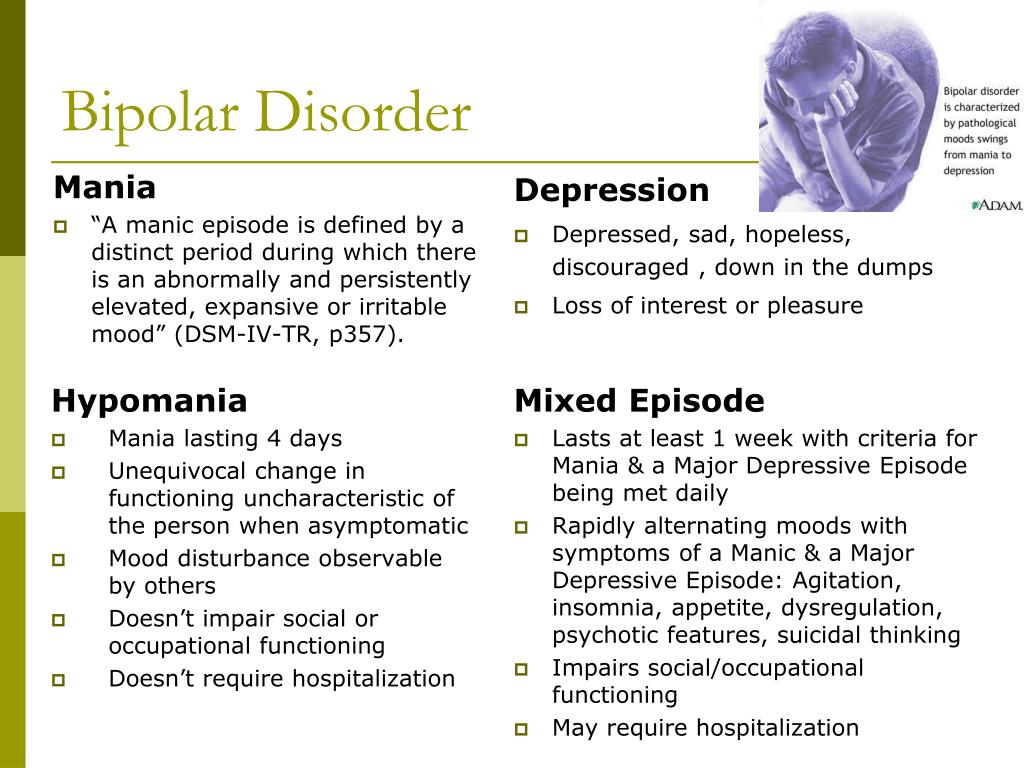
- Feeling like you’re unusually important, talented or powerful.
- Psychosis — experiencing hallucinations and delusions (in the most severe manic episodes).
Most of the time, people experiencing a manic episode are unaware of the negative consequences of their actions. With bipolar disorder, suicide is an ever-present danger — some people become suicidal in manic episodes, not just depressive episodes.
If a person is having an intense manic episode, especially if they’re experiencing hallucinations and delusions, they may need to be hospitalized to protect themselves and others from possible harm.
Signs and symptoms of hypomania
Some people with bipolar disorder have milder manic-like symptoms. This is called hypomania. With hypomania, you may feel very good and find that you can get a lot done. People with hypomania can often function well in social situations or at work.
You may not feel like anything is wrong during a hypomanic episode.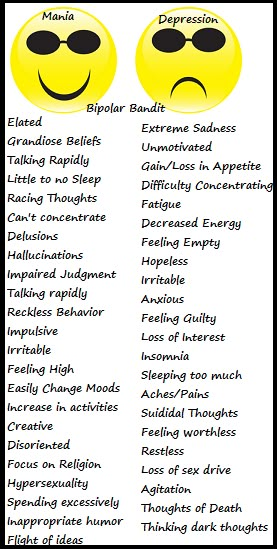 But your family and friends may notice your mood swings and activity level changes and think that they’re unusual for you. After hypomania, you might experience severe depression.
But your family and friends may notice your mood swings and activity level changes and think that they’re unusual for you. After hypomania, you might experience severe depression.
Signs and symptoms of depressive episodes
The symptoms of depressive episodes in bipolar disorder are the same as those of major depression. They include:
- Overwhelming sadness.
- Low energy and fatigue.
- Lack of motivation.
- Feelings of hopelessness or worthlessness.
- Loss of enjoyment of things that were once pleasurable for you.
- Difficulty concentrating and making decisions.
- Uncontrollable crying.
- Irritability.
- Increased need for sleep.
- Insomnia or excessive sleep.
- A change in appetite, causing weight loss or gain.
- Thoughts of death or suicide (suicidal ideation).
If you’re experiencing suicidal ideation (thoughts of suicide), it’s important to seek immediate care. Call 911 or the National Suicide Prevention Lifeline at 1. 800.273.8255. Someone will be available to talk with you 24 hours a day, seven days a week.
800.273.8255. Someone will be available to talk with you 24 hours a day, seven days a week.
Signs and symptoms of a mixed episode
The symptoms of a mixed episode include both manic and depressive symptoms together. During a mixed episode, you have the negative feelings and thoughts that come with depression but also feel agitated, restless and high energy.
People who experience mixed episodes often describe it as the worst part of bipolar disorder.
What causes bipolar disorder?
Scientists don’t yet know the exact cause of bipolar disorder.
But they do believe there’s a strong genetic (inherited) component. Bipolar disorder is considered one of the most heritable psychiatric conditions — more than two-thirds of people with bipolar disorder have at least one close biological relative with the condition. However, just because you have a biological relative with bipolar disorder, doesn’t necessarily mean you’ll also develop it.
Other factors that scientists think contribute to the development of bipolar disorder include:
- Changes in your brain: Researchers have identified subtle differences in the average size or activation of some brain structures in people with bipolar disorder.
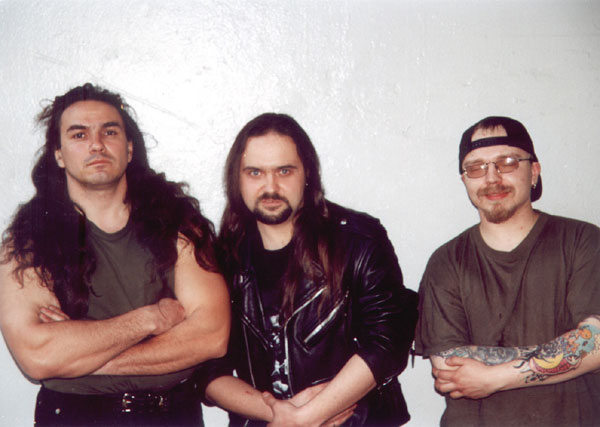 However, brain scans can’t diagnose the condition.
However, brain scans can’t diagnose the condition. - Environmental factors like trauma and stress: A stressful event, such as the death of a loved one, a serious illness, divorce or financial problems can trigger a manic or depressive episode. Because of this, stress and trauma may also play a role in the development of bipolar disorder.
Scientists are currently performing research to determine the relationship that these factors have in bipolar disorder, how they may help prevent its onset and what role they may play in its treatment.
Diagnosis and Tests
How is bipolar disorder diagnosed?
To diagnose bipolar disorder, your healthcare provider may use many tools, including:
- A physical exam.
- A thorough medical history, which will include asking about your symptoms, lifetime history, experiences and family history.
- Medical tests, such as blood tests, to rule out other conditions that could be causing your symptoms, such as hyperthyroidism.
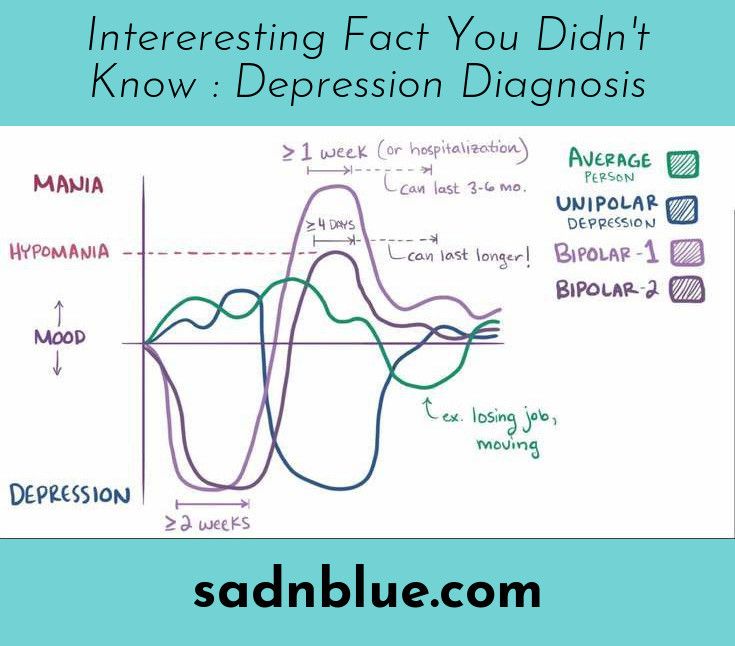
- A mental health evaluation. Your healthcare provider may perform the evaluation, or they may refer you to a mental health specialist, such as a psychologist or psychiatrist.
To be diagnosed with bipolar disorder, you must have experienced at least one episode of mania or hypomania. Mental health providers use the Diagnostic and Statistical Manual of Mental Disorders (DSM) to diagnose the type of bipolar disorder a person may be experiencing.
To determine what type of bipolar disorder you may have, your mental health provider assesses the pattern of symptoms and how much they affect your life during the most severe episodes.
People with bipolar disorder are more likely to also have the following mental health conditions:
- Anxiety.
- Attention-deficit /hyperactivity disorder (ADHD).
- Post-traumatic stress disorder (PTSD).
- Substance use disorders/dual diagnosis.
Because of this, as well as the fact that memory is often impaired during mania so people can’t remember experiencing it, it can be difficult for healthcare providers to properly diagnose people with bipolar disorder.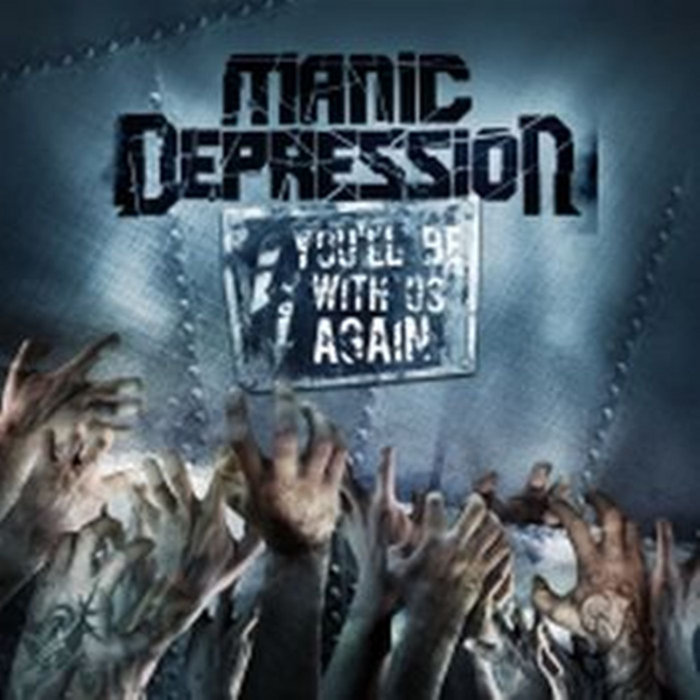
People with bipolar disorder who are experiencing a severe manic episode with hallucinations may be incorrectly diagnosed with schizophrenia. Bipolar disorder can also be misdiagnosed as borderline personality disorder (BPD).
Because of this, it’s important to be honest and thorough when explaining all of your symptoms and experiences when talking with your healthcare provider. It can also be helpful to include a loved one who may be able to provide additional details about your mental health history in your discussions with your provider.
Management and Treatment
How is bipolar disorder treated?
Treatment can help many people, including those with the most severe forms of bipolar disorder. An effective treatment plan usually includes a combination of the following therapies:
- Psychotherapy (talk therapy).
- Medications.
- Self-management strategies, like education and identifying the early symptoms of an episode or possible triggers of episodes.
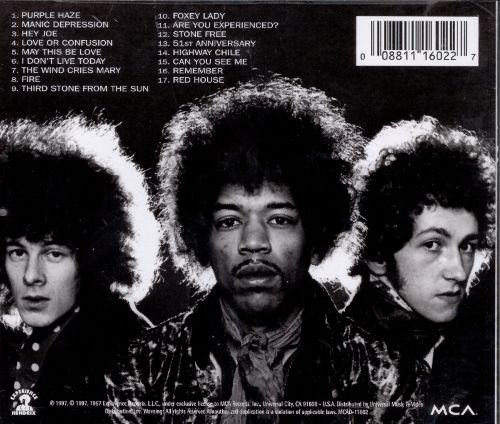
- Helpful lifestyle habits, such as exercise, yoga and meditation. These can support, but not replace, treatment.
- Other therapies, such as electroconvulsive therapy (ECT) in cases that are poorly responsive to medication or where rapid control of symptoms is necessary to prevent harm.
Bipolar disorder is a lifelong condition, so treatment is a lifelong commitment. It can sometimes take several months to years before you and your healthcare provider find a comprehensive treatment plan that works best for you. Although this can be discouraging, it’s important to continue treatment.
Episodes of mania and depression typically come back over time. Between episodes, many people with bipolar disorder don’t have mood changes, but some people may have lingering symptoms. Long-term, continuous treatment can help manage these symptoms.
If you have other mental health conditions in addition to bipolar disorder, such as anxiety or ADHD, it can be more difficult to treat the conditions. For example, the antidepressants healthcare providers prescribe to treat obsessive-compulsive disorder (OCD) and the stimulants they prescribe to treat ADHD may worsen symptoms of bipolar disorder and may even trigger a manic episode.
For example, the antidepressants healthcare providers prescribe to treat obsessive-compulsive disorder (OCD) and the stimulants they prescribe to treat ADHD may worsen symptoms of bipolar disorder and may even trigger a manic episode.
Again, even though it may be difficult to treat these conditions, it’s not impossible. Be sure to stay committed to finding a treatment plan that works for you.
What types of therapy are used to treat bipolar disorder?
Psychotherapy, also called “talk therapy,” can be an effective part of the treatment plan for people with bipolar disorder.
Psychotherapy is a term for a variety of treatment techniques that aim to help you identify and change troubling emotions, thoughts and behaviors. Working with a mental health professional, such as a psychologist or psychiatrist, can provide support, education and guidance to you and your family.
Different types of therapy for bipolar disorder include:
- Psychoeducation: Psychoeducation is the way mental health professionals teach people about their mental health conditions.
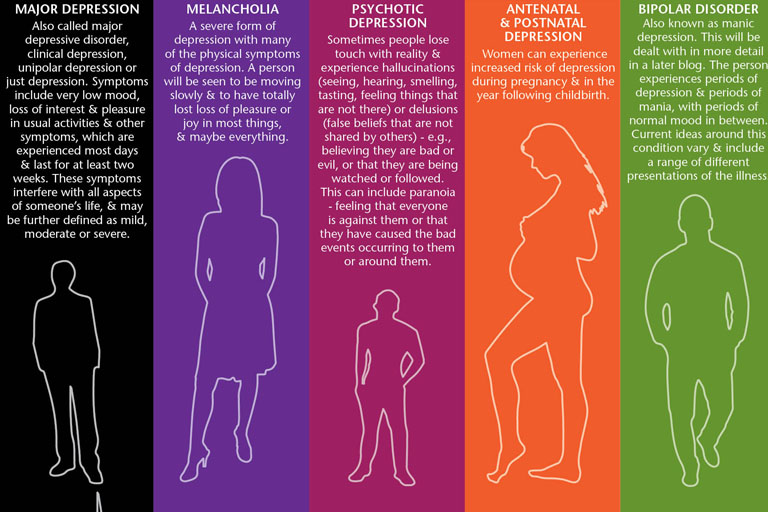 As bipolar disorder is a complex condition, learning about the condition and how it can affect your life can help you and your loved ones manage and cope with it better.
As bipolar disorder is a complex condition, learning about the condition and how it can affect your life can help you and your loved ones manage and cope with it better. - Interpersonal and social rhythm therapy (IPSRT): This therapy is designed to help you improve your moods by understanding and working with your biological and social rhythms. IPSRT is an effective therapy for people with mood disorders, including bipolar disorder. It emphasizes techniques to improve medication adherence (taking your medication regularly), manage stressful life events and reduce disruptions in social rhythms (day-to-day differences in habitual behaviors). IPSRT teaches you skills that let you protect yourself against the development of future manic or depressive episodes.
- Family-focused therapy: This therapy is for adults and children with bipolar disorder and their caregivers. During this treatment, your loved ones will join you in therapy sessions of psychoeducation regarding bipolar disorder, communication improvement training and problem-solving skills training.
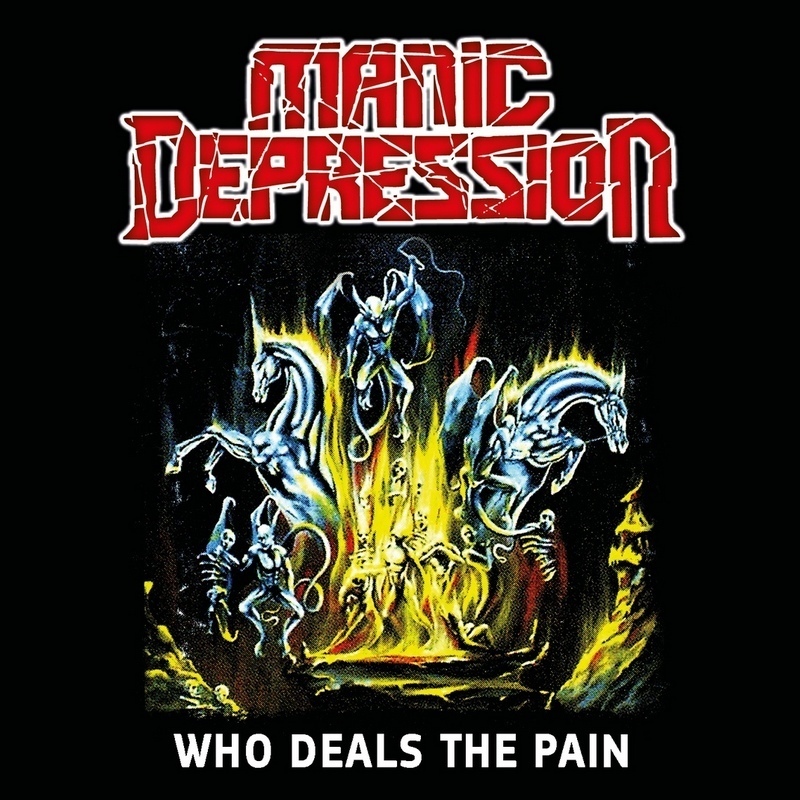
- Cognitive behavioral therapy (CBT): This is a structured, goal-oriented type of therapy. Your therapist or psychologist helps you take a close look at your thoughts and emotions. You’ll come to understand how your thoughts affect your actions. Through CBT, you can unlearn negative thoughts and behaviors and learn to adopt healthier thinking patterns and habits.
What medications are used to treat bipolar disorder?
Certain medications can help manage symptoms of bipolar disorder. You may need to try several different medications, with guidance from your healthcare provider, before finding what works best.
Medications healthcare providers generally prescribe to treat bipolar disorder include:
- Mood stabilizers.
- Second-generation (“atypical”) neuroleptics (also called antipsychotics).
- Antidepressants.
If you’re taking medication for bipolar disorder, you should:
- Talk with your healthcare provider to understand the risks, side effects and benefits of the medication.
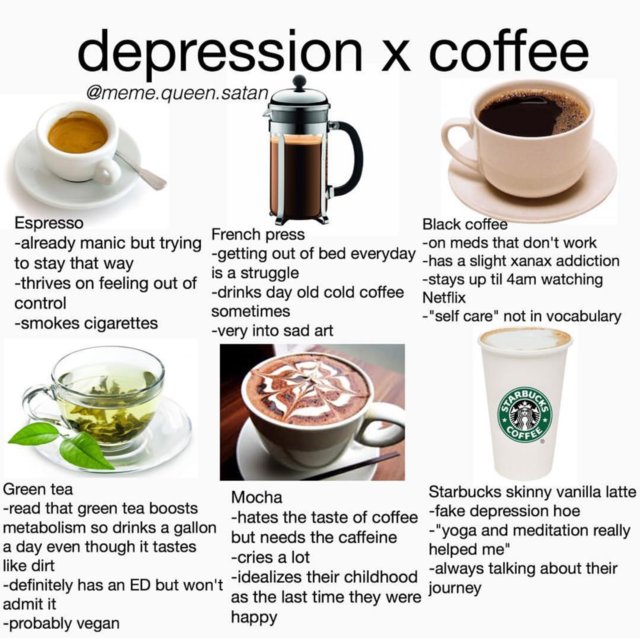
- Tell your healthcare provider about any prescription drugs, over-the-counter medications or supplements you’re already taking.
- Tell your healthcare provider right away if you’re experiencing concerning side effects. They may need to change your dose or try a different medication.
- Remember that medication for bipolar disorder must be taken consistently, as prescribed.
Mood stabilizers for bipolar disorder
People with bipolar disorder typically need mood-stabilizing medication to manage manic or hypomanic episodes.
Types of mood stabilizers and their brand names include:
- Lithium (Eskalith®, Lithobid®, Lithonate®).
- Valproic acid (Depakene®).
- Divalproex sodium (Depakote®).
- Carbamazepine (Tegretol®, Equetro®).
- Lamotrigine (Lamictal®).
Lithium is one of the most widely prescribed and studied medications for treating bipolar disorder. Lithium is a natural salt and will reduce symptoms of mania within two weeks of starting therapy, but it may take weeks to months before the manic symptoms are fully managed.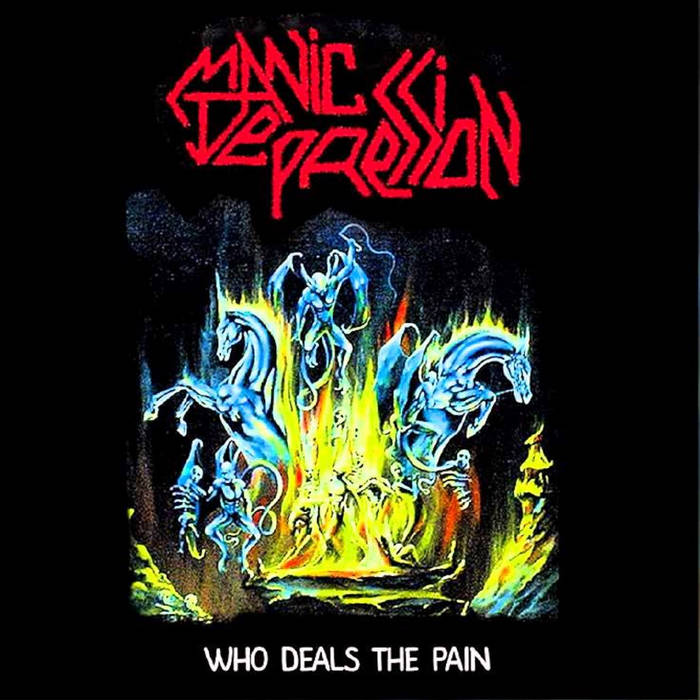 Because of this, healthcare providers often prescribe other drugs like antipsychotic drugs or antidepressant drugs to help manage symptoms.
Because of this, healthcare providers often prescribe other drugs like antipsychotic drugs or antidepressant drugs to help manage symptoms.
Thyroid gland and kidney problems can sometimes develop when taking lithium, so your healthcare provider will monitor the function of your thyroid and kidneys, as well as monitor the levels of lithium in your blood, as levels can easily become too high.
Anything that lowers the level of sodium in your body, such as switching to a low-sodium diet, heavy sweating, fever, vomiting or diarrhea may cause a toxic buildup of lithium in your body. Be aware of these conditions and alert your doctor if you’re on lithium and experience them.
The following are signs of lithium toxicity (lithium overdose). Call your healthcare provider immediately or go to the nearest emergency room if you experience:
- Blurred vision or double vision.
- Irregular pulse.
- Extremely fast or slow heartbeat.
- Difficulty breathing.
- Confusion and dizziness.
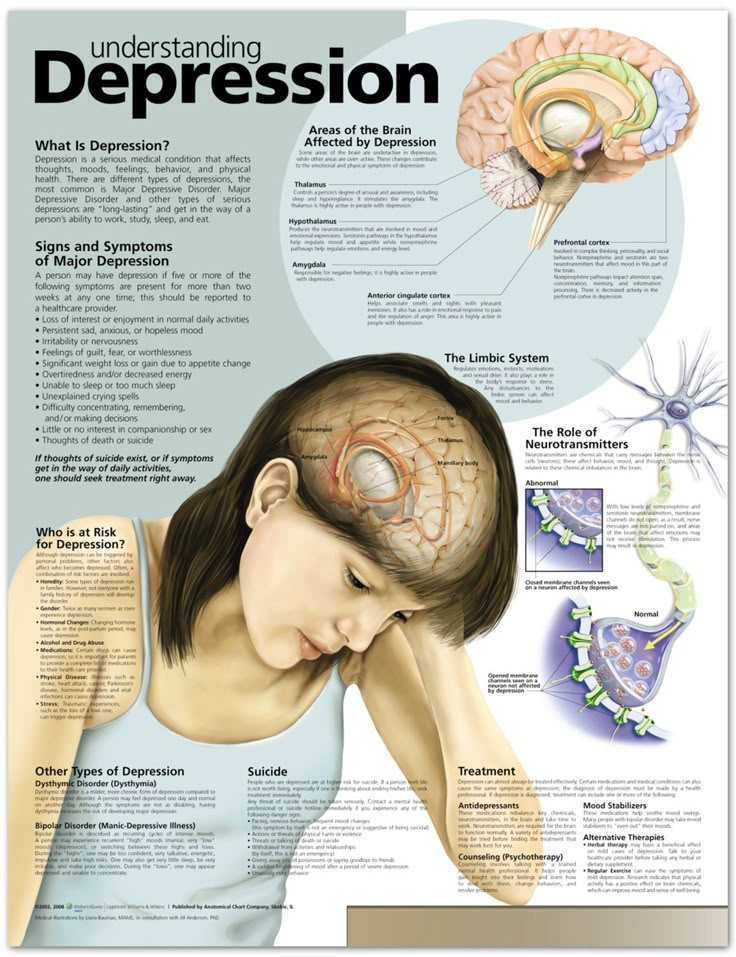
- Severe trembling or convulsions.
- Passing large amounts of pee.
- Uncontrolled eye movements.
- Unusual bruising or bleeding.
Neuroleptic medications for bipolar disorder
Healthcare providers often prescribe second-generation or atypical neuroleptics (antipsychotics) in combination with a mood stabilizer for people with bipolar disorder. These medications help with both manic and depressive episodes.
Only four of these drugs are U.S. Food and Drug Administration (FDA)-approved to help treat bipolar depression, including:
- Cariprazine (Vraylar®).
- Lurasidone (Latuda®).
- Olanzapine-fluoxetine combination (Symbyax®).
- Quetiapine (Seroquel®).
However, other medications, such as olanzapine (Zyprexa®), risperidone (Risperdal®) and aripiprazole (Abilify®), are commonly prescribed as well.
Antidepressants for bipolar disorder
Healthcare providers sometimes prescribe antidepressant medication to treat depressive episodes in bipolar disorder, combining the antidepressant with a mood stabilizer to prevent triggering a manic episode.
Antidepressants are never used as the only medication to treat bipolar disorder because only taking an antidepressant drug can trigger a manic episode.
What are the side effects of bipolar disorder medications?
Side effects of bipolar disorder medications are common and vary by medication. It’s important to talk with your healthcare provider about what you can expect when taking certain medications. It’s also important to tell them if you’re experiencing side effects.
Never stop taking your medication unless your healthcare provider tells you to do so. Abruptly stopping medication can cause severe side effects and trigger severe episodes.
The most common side effects of bipolar disorder medications include:
- Weight gain.
- Metabolic dysregulation, including abnormal lipid levels (dyslipidemia), high blood pressure (hypertension) and high blood sugar (hyperglycemia).
- Drowsiness.
- Akathisia — feelings of restlessness and agitation with a compelling need to move, rock or pace.

What other medical treatments are used for bipolar disorder?
Other treatment options your healthcare provider may consider for treating bipolar disorder include:
- Electroconvulsive therapy (ECT): This is a procedure in which a brief application of an electric current to your brain, through your scalp, induces a seizure. It’s most often used to treat people with severe depression. ECT is very safe and highly effective for medication-resistant depression or acute life-threatening mania. It’s the best treatment for mania in people who are pregnant. ECT is uses general anesthesia, so you’ll be asleep during the procedure and won’t feel any pain.
- Transcranial magnetic stimulation (TMS): This therapy involves a short electromagnetic coil that passes an electric current into your brain. Healthcare providers sometimes use it to treat medication-resistant depression. It’s an alternative to ECT. TMS isn’t painful and doesn’t require general anesthesia.

- Thyroid medications: These medications can sometimes act as mood stabilizers. Studies have shown positive results in reducing symptoms in people AFAB with hard-to-treat, rapid-cycling bipolar disorder.
- Ketamine treatment: Ketamine, an anesthetic, given at low doses through an IV, has been proven to provide short-term antidepressant and antisuicidal effects for people with bipolar disorder.
- Hospitalization: This is considered an emergency option in bipolar disorder care. It becomes necessary when someone is experiencing a severe depressive or manic episode and they’re an immediate threat to themselves or others.
What lifestyle changes can help with bipolar disorder?
Your healthcare team will likely recommend making lifestyle changes to stop patterns of behavior that worsen the symptoms of bipolar disorder. Some of these lifestyle changes include:
- Quit drinking alcohol and/or using recreational drugs and tobacco: It’s essential to quit drinking and using drugs, including tobacco, since they can interfere with medications you may take.
 They can also worsen bipolar disorder and trigger a mood episode.
They can also worsen bipolar disorder and trigger a mood episode. - Keep a daily diary or mood chart: Keeping track of your daily thoughts, feelings and behaviors can help you be aware of how well your treatment is working and/or help you identify potential triggers of manic or depressive episodes.
- Maintain a healthy sleep schedule: Bipolar disorder can greatly affect your sleep patterns, and changes in your frequency of sleep can even trigger an episode. Prioritize a routine sleeping schedule, including going to sleep and getting up at the same times every day.
- Exercise: Exercise has been proven to improve mood and mental health in general, so it may help manage your symptoms related to bipolar disorder. Since weight gain is a common side effect of bipolar disorder medications, exercise may also help with weight management.
- Meditation: Meditation has been shown to be effective in improving the depression that’s part of bipolar disorder.

- Manage stress and maintain healthy relationships: Stress and anxiety can worsen mood symptoms in many people with bipolar disorder. It’s important to manage your stress in a healthy way and to try to eliminate stressors when you can. A big part of this is maintaining healthy relationships with friends and family who support you, and letting go of toxic relationships with people who add stress to your life.
Prevention
Can bipolar disorder be prevented?
Unfortunately, there’s no known way to prevent bipolar disorder because scientists don’t know its exact cause.
But it’s important to know the signs and symptoms of bipolar disorder and to seek early intervention.
Outlook / Prognosis
What is the outlook (prognosis) of bipolar disorder?
The prognosis for bipolar disorder is often poor unless it’s properly treated. Many people with bipolar disorder who receive appropriate treatment can live fulfilling and productive lives.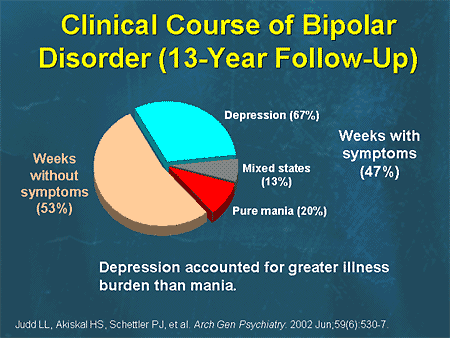
Bipolar disorder results in approximately nine years reduction in expected life span, and as many as1 in 5 people with bipolar disorder commit suicide. An estimated 60% of all people with bipolar disorder have drug or alcohol dependence.
This is why it’s essential to seek medical care and stay committed to treatment for bipolar disorder.
Regular and continued use of medication can help reduce episodes of mania and depression. By knowing how to recognize the symptoms and triggers of these episodes, there’s a better chance for effective treatment and finding coping methods that may prevent long periods of illness, extended hospital stays and suicide.
Living With
When should I see my healthcare provider about bipolar disorder?
If you’ve been diagnosed with bipolar disorder, you’ll need to see your healthcare team regularly throughout your life to make sure your treatment is working well for you. This team may include your:
- Primary healthcare provider.
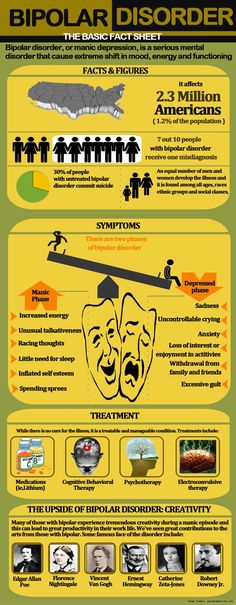
- Psychiatrist.
- Psychologist or therapist.
- Neurologist.
When should I go to the emergency room (ER) for bipolar disorder?
If you’re experiencing any of these situations, it’s essential to call 911 or get to the nearest emergency room:
- Thoughts of death or suicide.
- Thoughts or plans of hurting yourself or others.
- Experiencing hallucinations and delusions.
- Symptoms of lithium toxicity (overdose), such as severe nausea and vomiting, severe hand tremors, confusion and vision changes.
A note from Cleveland Clinic
Bipolar disorder is a lifelong illness. But long-term, ongoing treatment, such as medication and talk therapy, can help manage your symptoms and enable you to live a healthy, purposeful life. It’s important to see your healthcare team regularly to monitor your treatment plan and symptoms. Know that your healthcare providers and loved ones are there to support you.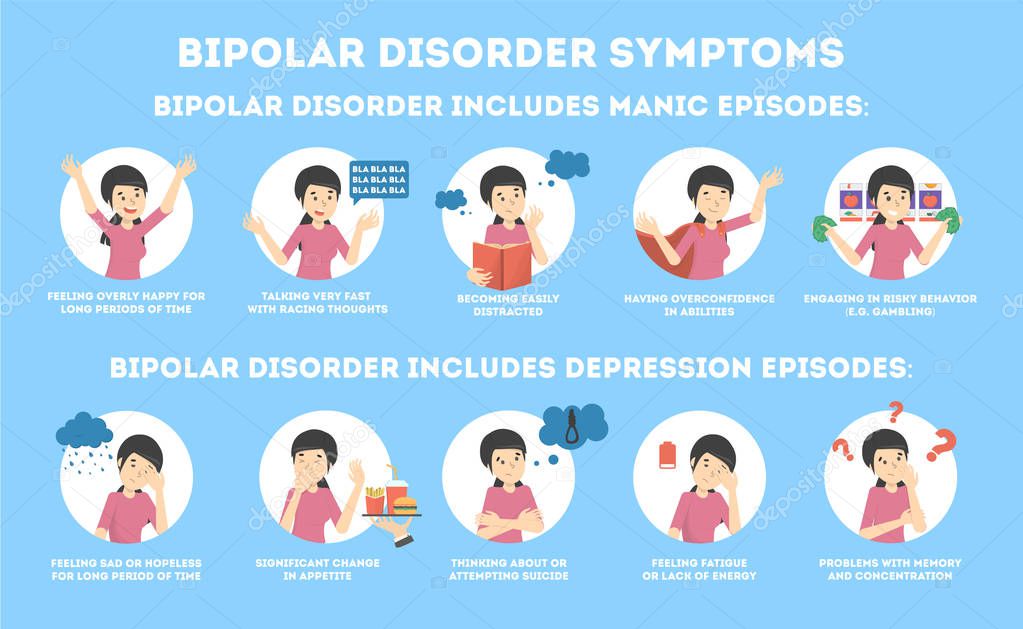
Bipolar Disorder | Symptoms, complications, diagnosis and treatment
Bipolar disorder, formerly called manic depression, is a mental health condition that causes extreme mood swings that include emotional highs (mania or hypomania) and lows (depression). Episodes of mood swings may occur infrequently or several times a year.
When you become depressed, you may feel sad or hopeless and lose interest or pleasure in most activities. When the mood shifts to mania or hypomania (less extreme than mania), you may feel euphoric, full of energy or unusually irritable. These mood swings can affect sleep, energy, alertness, judgment, behavior, and the ability to think clearly.
Although bipolar disorder is a lifelong condition, you can manage your mood swings and other symptoms by following a treatment plan. In most cases, bipolar disorder is treated with medication and psychological counseling (psychotherapy).
Symptoms
There are several types of bipolar and related disorders.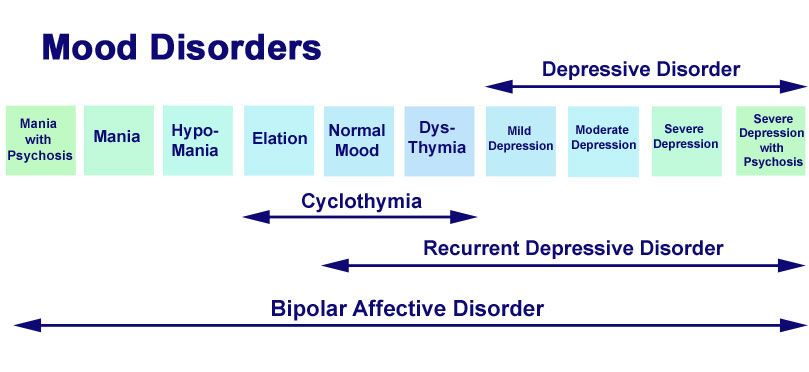 These may include mania, hypomania, and depression. The symptoms can lead to unpredictable changes in mood and behavior, leading to significant stress and difficulty in life.
These may include mania, hypomania, and depression. The symptoms can lead to unpredictable changes in mood and behavior, leading to significant stress and difficulty in life.
- Bipolar disorder I. You have had at least one manic episode, which may be preceded or accompanied by hypomanic or major depressive episodes. In some cases, mania can cause a break with reality (psychosis).
- Bipolar disorder II. You have had at least one major depressive episode and at least one hypomanic episode, but never had a manic episode.
- Cyclothymic disorder. You have had at least two years - or one year in children and adolescents - many periods of hypomanic symptoms and periods of depressive symptoms (though less severe than major depression).
- Other types. These include, for example, bipolar and related disorders caused by certain drugs or alcohol, or due to health conditions such as Cushing's disease, multiple sclerosis, or stroke.

Bipolar II is not a milder form of Bipolar I but is a separate diagnosis. Although bipolar I manic episodes can be severe and dangerous, people with bipolar II can be depressed for longer periods of time, which can cause significant impairment.
Although bipolar disorder can occur at any age, it is usually diagnosed in adolescence or early twenties. Symptoms can vary from person to person, and symptoms can change over time.
Mania and hypomania
Mania and hypomania are two different types of episodes, but they share the same symptoms. Mania is more pronounced than hypomania and causes more noticeable problems at work, school, and social activities, as well as relationship difficulties. Mania can also cause a break with reality (psychosis) and require hospitalization.
Both a manic episode and a hypomanic episode include three or more of these symptoms:
- Abnormally optimistic or nervous
- Increased activity, energy or excitement
- Exaggerated sense of well-being and self-confidence (euphoria)
- Reduced need for sleep
- Unusual talkativeness
- Distractibility
- Poor decision-making - for example, in speculation, in sexual encounters or in irrational investments
Major depressive episode
Major depressive episode includes symptoms that are severe enough to cause noticeable difficulty in daily activities such as work, school, social activities, or relationships.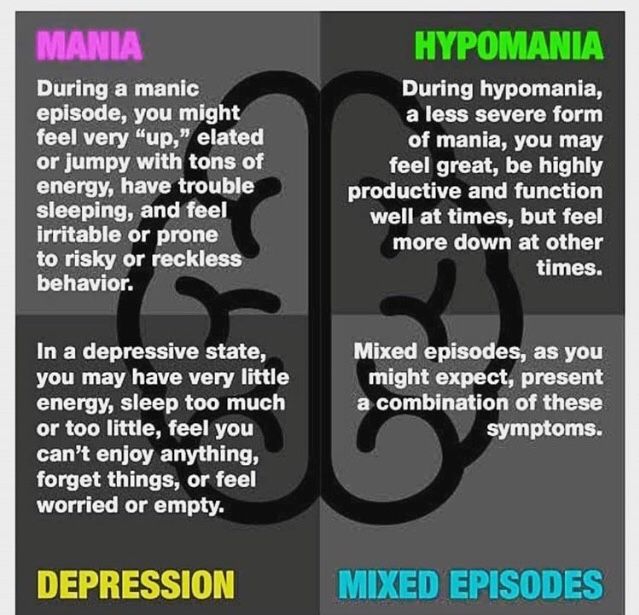 Episode includes five or more of these symptoms:
Episode includes five or more of these symptoms:
- Depressed mood, such as feeling sad, empty, hopeless, or tearful (in children and adolescents, depressed mood may manifest as irritability)
- Marked loss of interest or feeling of displeasure in all (or nearly all) activities
- Significant weight loss with no diet, weight gain, or decreased or increased appetite (in children, failure to gain weight as expected may be a sign of depression)
- Either insomnia or sleeping too much
- Either anxiety or slow behavior
- Fatigue or loss of energy
- Feelings of worthlessness or excessive or inappropriate guilt
- Decreased ability to think or concentrate, or indecisiveness
- Thinking, planning or attempting suicide
Other features of bipolar disorder
Signs and symptoms of bipolar I and bipolar II disorder may include other signs such as anxiety disorder, melancholia, psychosis, or others.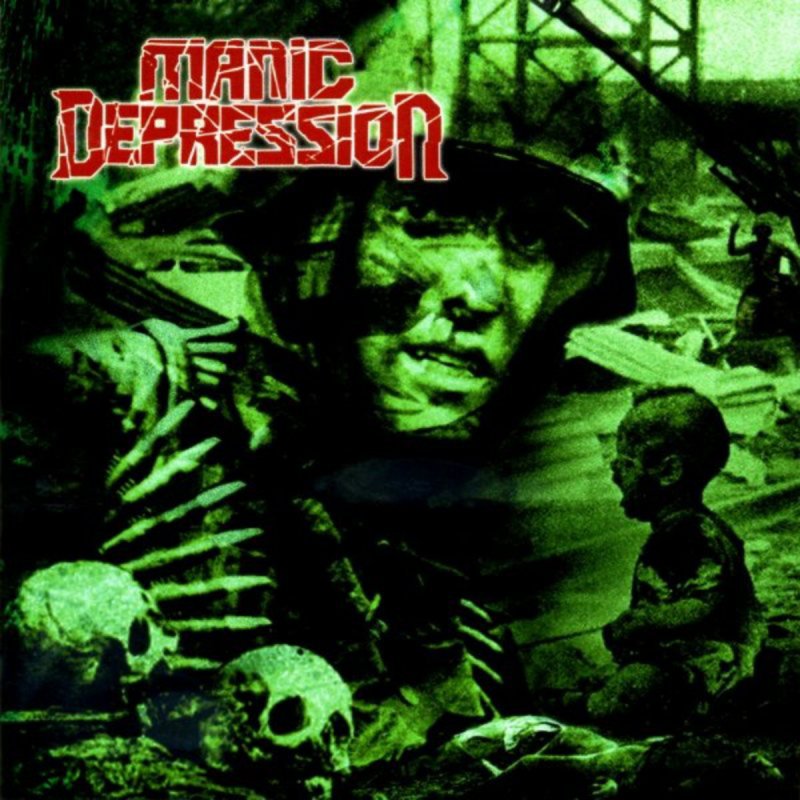 The timing of symptoms may include diagnostic markers such as mixed or fast cycling. In addition, bipolar symptoms may occur during pregnancy or with the change of seasons.
The timing of symptoms may include diagnostic markers such as mixed or fast cycling. In addition, bipolar symptoms may occur during pregnancy or with the change of seasons.
When to see a doctor
Despite extreme moods, people with bipolar disorder often do not realize how much their emotional instability disrupts their lives and the lives of their loved ones and do not receive the necessary treatment.
And if you are like people with bipolar disorder, you can enjoy feelings of euphoria and be more productive. However, this euphoria is always accompanied by an emotional disaster that can leave you depressed and possibly in financial, legal, or other bad relationships.
If you have symptoms of depression or mania, see your doctor or mental health professional. Bipolar disorder does not improve on its own. Getting mental health treatment with a history of bipolar disorder can help control your symptoms.
Bipolar Affective Disorder (Manic-Depressive Psychosis): Causes, Symptoms, Treatment
Bipolar Affective Disorder - a violation of the mental status of a person, accompanied by a change in periods of mania, depression and intermission.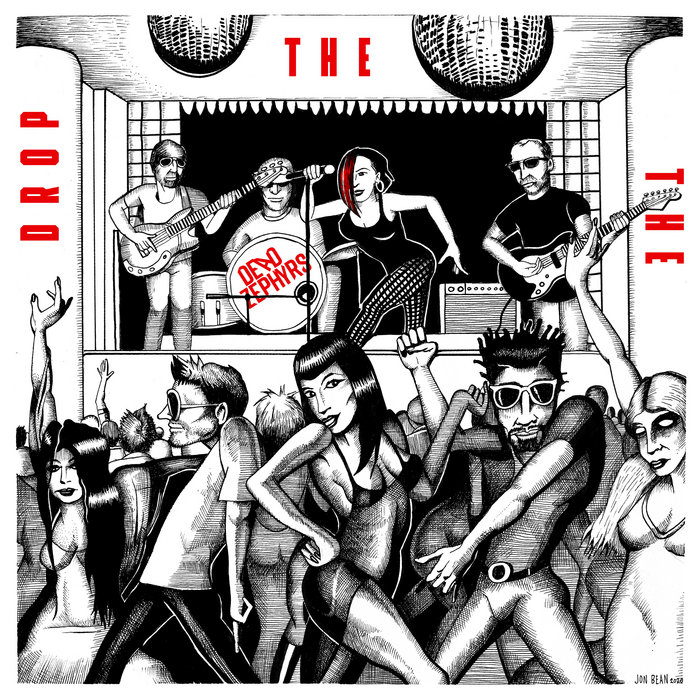 This state was previously called manic-depressive psychosis .
This state was previously called manic-depressive psychosis .
Mania is a special mental state in which a person resides, characterized by high spirits, a feeling of superiority over others, a sense of emancipation, reduced need for rest, etc., lasting at least a week.
Depression is a period of mental depression accompanied by sadness, depression, sleep disturbance, irritability, suicidal thoughts, etc.
Intermission (interphase) is called the "light" period in the mental state of a patient with bipolar affective disorder, in which his consciousness and activity are completely restored. It is worth noting that the alternation of mania and depression can occur without periods of intermission.
Attention!
Here you can choose a doctor who treats Bipolar affective disorder (Manic-depressive psychosis) If you are not sure about the diagnosis, make an appointment with a general practitioner or general practitioner to clarify the diagnosis.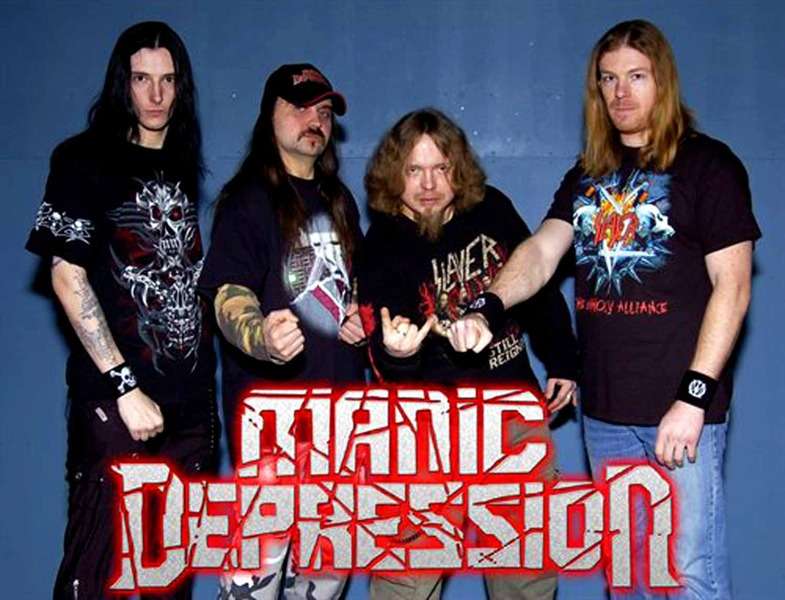
Articles on Bipolar Affective Disorder (Manic-Depressive Psychosis):
Causes
Symptoms
Diagnosis
Which doctor treats Bipolar affective disorder (Manic-depressive psychosis)
5
Face-to-face consultations (including at home), remote (video, audio, text) — Phone, Skype, Viber, WhatsApp, Messenger, Telegram, Instagram, Facebook. Specialization: depression, anxiety, fear, panic attacks, insomnia, irritability, VSD, bipolar disorder, schizophrenia, senile dementia, obsessive-compulsive disorder, neurosis, psychosis, alcoholism, drug addiction (see below for a complete list). Leading specialist of the Center for Psychotherapy. Work experience as the head of the department in the clinical hospital "Feofaniya". Doctor of the highest category. Psychotherapist, psychiatrist, psychologist, narcologist. Experience 29years..
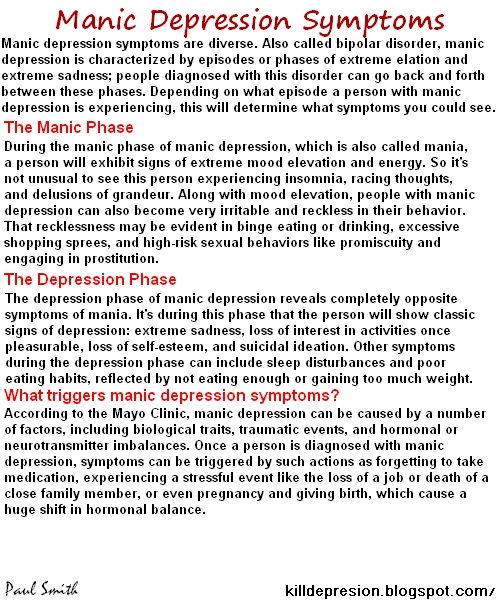 — 2750 UAH, 45 min. — 3600 UAH, 60 min. — 4450 UAH..
— 2750 UAH, 45 min. — 3600 UAH, 60 min. — 4450 UAH.. 5
Irina Nikolaevna psychiatrist of the highest category with more than 20 years of experience. Specializes in the treatment of mood disorders, depression, anxiety and panic disorders, obsessive-compulsive disorders, dementia, schizophrenia, etc.
1950 UAH
Multidisciplinary complex of psychiatry and narcology "Renaissance-Kyiv"
Online consultation (Viber, Whatsapp, Telegram, Skype, ZOOM) Consultation 30 min. - 1100 UAH 45 min. -1400 UAH 60 min. - 1700 UAH Package "Premium" (Psychodiagnostics, Testing, Individual psychotherapy, Treatment prescription, Support during treatment) - 3400 UAH. Coding from alcoholism — 4900 UAH. Consultation in English 45 min.—3000 UAH. Field consultation - 3500 UAH.
- 1100 UAH 45 min. -1400 UAH 60 min. - 1700 UAH Package "Premium" (Psychodiagnostics, Testing, Individual psychotherapy, Treatment prescription, Support during treatment) - 3400 UAH. Coding from alcoholism — 4900 UAH. Consultation in English 45 min.—3000 UAH. Field consultation - 3500 UAH.
View All Doctors Psychiatrists
Causes
There are a number of causes that cause bipolar affective disorder. In the first place here can be attributed heredity. This is because the likelihood of getting sick is higher if other family members have the disease. Another important reason is autointoxication. In this case, there is a violation of the endocrine balance and water-electrolyte metabolism. Stressful situations can burden depression, but they are not the cause of this disease. Alcohol and drug abuse are also causes of this disorder. Also, the individual characteristics of each person, brain injuries and his diseases occupy a significant place among the causes.
Stressful situations can burden depression, but they are not the cause of this disease. Alcohol and drug abuse are also causes of this disorder. Also, the individual characteristics of each person, brain injuries and his diseases occupy a significant place among the causes.
Symptoms
Symptoms of bipolar affective disorder can appear in a person at any age. They differ from each other in each of the phases of the disease. During the manic phase, five stages are distinguished, namely:
- hypomanic stage. A person has an increased emotional state. During this period, a person is characterized by both physical and psychological vigor. Sleep duration begins to decrease.
- the next stage is the stage of severe mania. Patients constantly joke about something. But in between, there are short flashes of sudden anger. A person's self-esteem rises sharply, many meaningless ideas arise. The duration of sleep continues to decrease, and in this phase it is approximately 4 hours a day;
- The maximum expression of symptoms occurs at the stage of manic frenzy.
 The patient's movements are abrupt. His speech becomes incomprehensible and quite often can consist of phrases or even just words;
The patient's movements are abrupt. His speech becomes incomprehensible and quite often can consist of phrases or even just words; - the intensity of the previous symptoms begins to decrease at the next stage - the stage of motor sedation. This is especially true of motor excitation.
In the last, reactive stage, the symptoms of mania return to normal.
In turn, the depressive phase covers 4 stages:
- at the initial stage the patient complains of poor sleep. The person becomes depressed, the mood decreases. Although by the evening the patient's condition may improve;
- the stage of increasing depression is characterized by the fact that a person's working capacity decreases. The mood worsens and there is a certain anxiety. The patient begins to speak quietly and slowly. Subsequently, insomnia begins, appetite disappears sharply;
- at the next stage, the symptoms are most exacerbated. This stage is called the stage of severe depression.
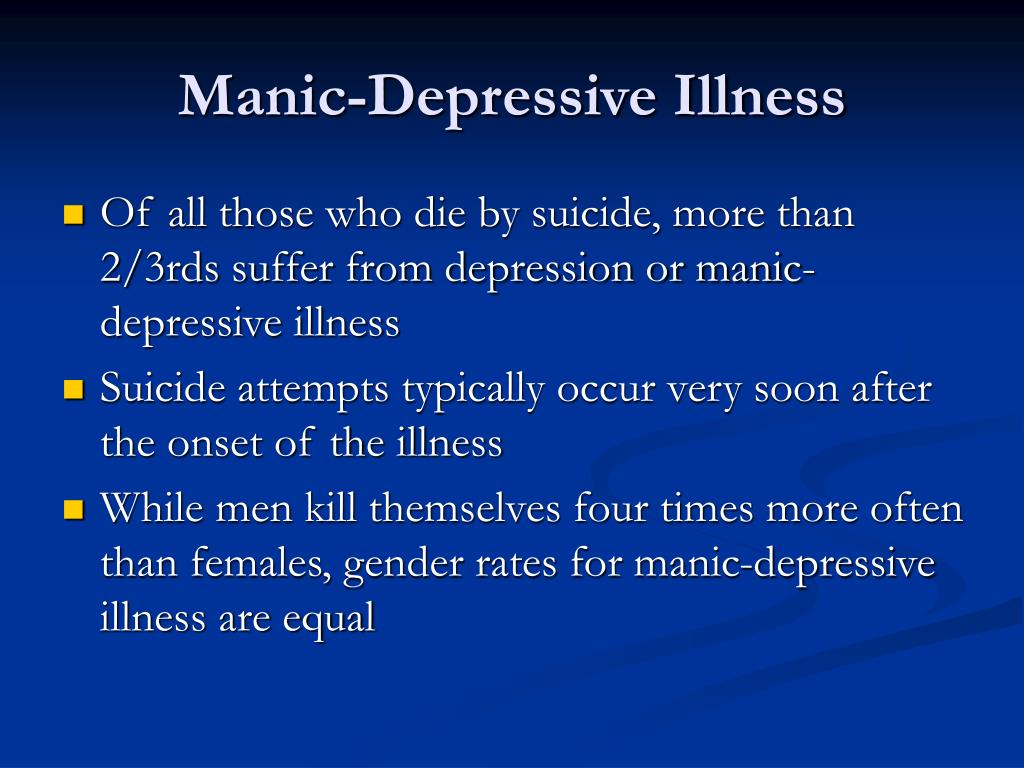 The patient is constantly accompanied by a feeling of incomprehensible anxiety and sadness. Speech becomes very quiet and slow. People can sit or lie down for a long time without changing their posture. Very often, suicidal thoughts and actions begin to appear. The patient is haunted by thoughts about the meaninglessness of being, pushing him to commit suicide;
The patient is constantly accompanied by a feeling of incomprehensible anxiety and sadness. Speech becomes very quiet and slow. People can sit or lie down for a long time without changing their posture. Very often, suicidal thoughts and actions begin to appear. The patient is haunted by thoughts about the meaninglessness of being, pushing him to commit suicide; - in the reactive stage, all symptoms are gradually reduced. The person becomes more active.
There are also two main phases, manic and depressive.
The manic phase covers the following range of symptoms:
- euphoric or aggressively irritable mood;
- reduced need for sleep, as well as its duration;
- constant emotional instability;
The depressive phase includes the following symptoms:
- depression of mood;
- loss of appetite or lack thereof;
- the patient speaks very slowly and quietly;
- feeling much worse in the morning.
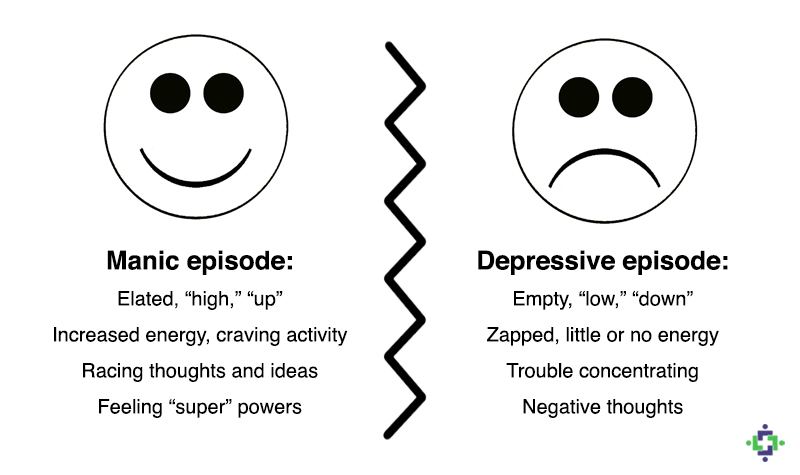 By evening, they gradually become normal.
By evening, they gradually become normal.
Diagnosis
The diagnosis of bipolar affective disorder is that the patient is found to have repeated episodes of abrupt mood changes. The psychotherapist determines which of the periods, manic or depressive, the patient is experiencing at the moment, and in accordance with this prescribes treatment. Also check the level of motor activity.
Treatment
Currently, with the help of special medications in combination with psychotherapy, it is possible to effectively treat bipolar affective disorder. Psychotherapy is an integral part of the treatment, because it is during it that the doctor, communicating with the patient, can find out the causes of the disease. This will accordingly improve the patient's condition, set him up for positive thoughts and help solve a number of problems. A fairly common phenomenon now is the course of family psychotherapy. Relatives and friends of the patient begin to understand the disease better and help to overcome it faster.